
- O’pen Skiff Purchase Page
- ILCA – Element 6
- RS Sailboats
- Sunfish – Recreational
- Sunfish – Race Version
- Sunfish Sails
- LaserPerformance Sunfish Parts Price List
- 420 – Zim Sailing

Finding the Right Laser Rig: Formula
- Racks by Dynamic Dollies and Racks
- Load Rite Trailers
- Load Rite Sunfish Trailer
- **NEW** LoadRite for Sailboats
- Sunfish Dolly by Dynamic
- Optimist Dolly by Dynamic
- How to Apply Laser Sail Numbers
- Applying Laser Sail Numbers
- North Sails for LaserPerformance Dinghies
- About/Contact
Choices of Rigs for your Laser Hull :

Finding the Right Laser Rig – 3 Choices:
Now this is where it becomes a bit interesting because all three rigs fit and work exceptionally well with the Laser hull. Any sized sailor can sail with one of these rigs in most conditions and have fun. But what if you are thinking competitively? What is optimal for you? The quick and simple formula is this:
- 4.7 Rig – Designed for smaller sailors 110 – 140 lbs. (50 – 65 kg).
- Radial Rig – Used as the women’s Olympic class, and designed for sailors 140 – 175 lbs. (65-80 kg).
- Full or Standard Rig – Used as the men’s Olympic class, and designed for sailors 165 lbs.+ (75 kg+).”Olympic sailors are in the 180 lbs. range but club sailors do well weighing in over 200 lbs. in certain conditions.” Paraphrased from propercourse.blogspot.com
Laser 4.7 Rig:
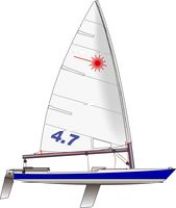
Laser Radial Rig:

A look at the hardware that changes the 3 rigs:
The Upper Mast section on the left side in this drawing is identical for all 3 rigs. It mates together with the other lower 3 mast section choices shown at the right. These parts are all available from Shoreline Sailboats along with class legal sails. The lower mast sections come with a gooseneck and vang tang; completely ready to go.
No matter which rig you choose, the Laser is a challenging boat that rewards athleticism, subtle steering, and trimming techniques, as well as tactical excellence.
Share this:
- Click to email this to a friend (Opens in new window)
- Click to share on Facebook (Opens in new window)
- Click to share on Twitter (Opens in new window)
- Click to print (Opens in new window)
- Click to share on Pinterest (Opens in new window)
- Click to share on LinkedIn (Opens in new window)
- Click to share on Tumblr (Opens in new window)
- Click to share on Reddit (Opens in new window)
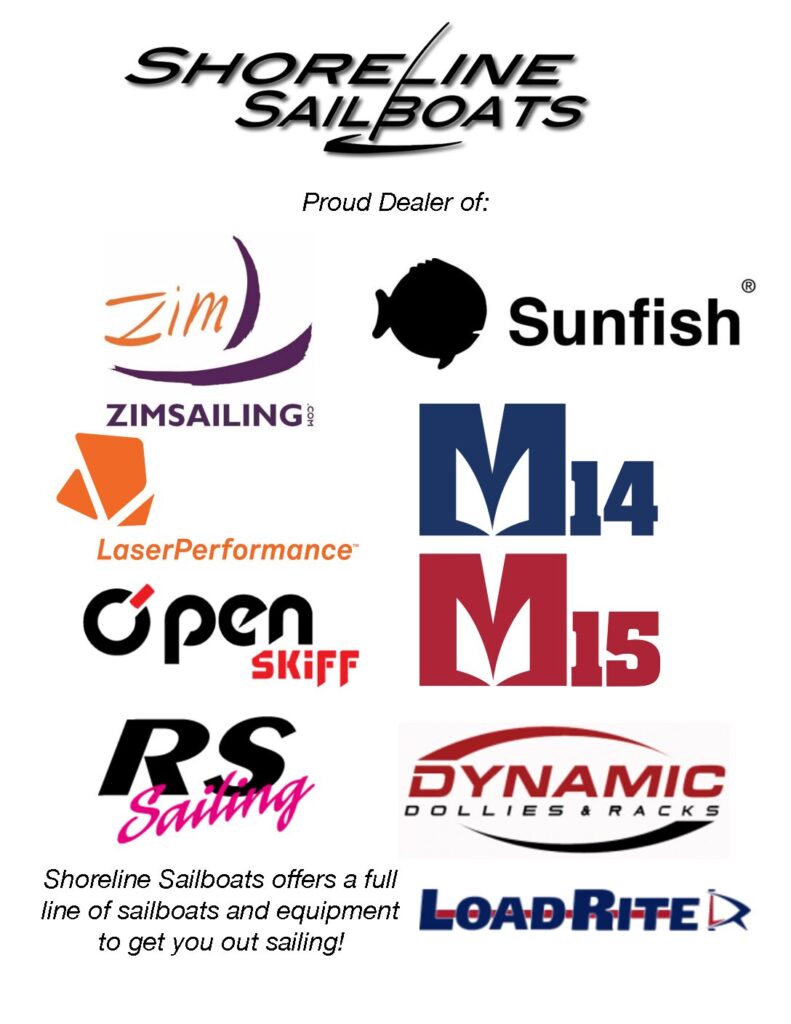
THE MELGES 15!
THE ROCKET! Built in the USA
SUNFISH – SAIL A CLASSIC!
Recent Posts

Hours & Info
Search products.
Contact us:
Any questions about the sailboats we sell, or the services we provide? We’re always eager to talk sailing and would enjoy helping you with any of your sailing needs. Contact Us
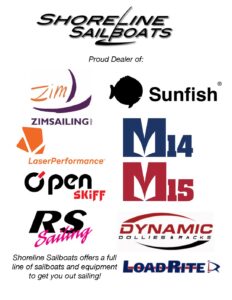
Designed by WPZOOM
Your cart is empty
Have an account?
Log in to check out faster.
Best Sellers

ILCA (Laser) Sailing 101
What is the ilca (laser) class.
Note: In this article, the terms "Laser" and "ILCA" are going to be used interchangeably. Worldwide, the class is now officially known as the ILCA, despite originally being called the Laser .
The Laser class is a one design dinghy originally designed by Bruce Kirby and Ian Bruce in 1969. Although the original intent behind the design was a recreational, family-friendly boat, the Laser has gone on to become one of the most popular racing boats in the world, with over 220,000 produced.
What makes up a boat?
Being a one design and Olympic class, all Laser boats conform strictly to the Laser class rules. In order to compete at continental and international championships, you will need to ensure that your equipment is ILCA class certified, and complies with the measurement standards set out by the class. There is a number of non-class legal equipment available, and if you're just planning on sailing for fun, these are a great option for getting started. (Hint: google Intensity Sails)
A relatively lightweight hull for its size, the Laser is 4.23m long, has a beam of 1.42m and weights 57kg. All hulls are built from glass reinforced plastic (AKA fibreglass) and are known for their robust construction and light weight.
One of the unique features of the Laser class is the three different rigs which can all be used with the same hull. This allows sailors of different ages, weights and abilities to participate in a single class. The rigs are:
Laser Standard (ILCA 7)
Laser Radial (ILCA 6)
Laser 4.7 (ILCA 4)
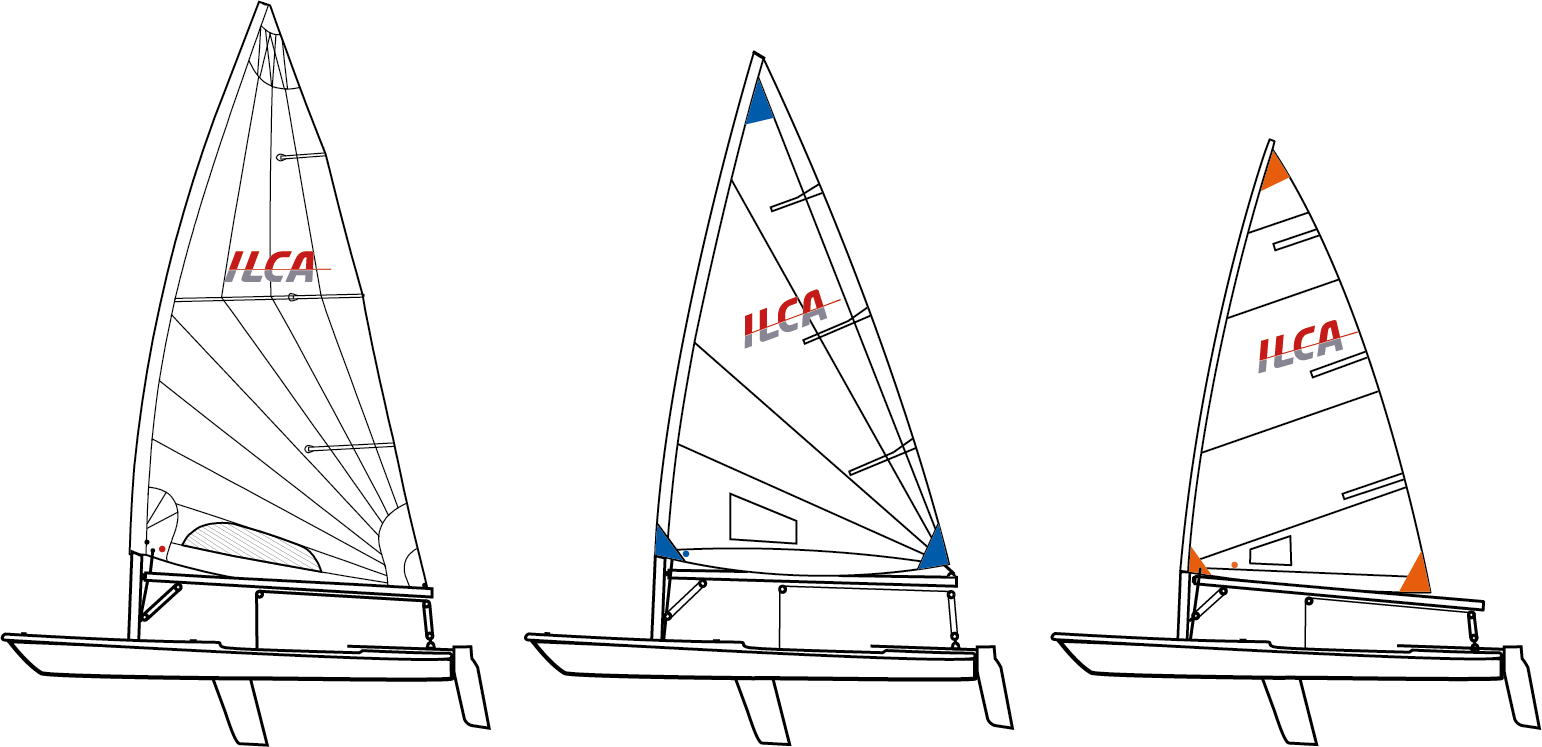
Masts/Spars
Each Laser rig consists of three pieces - the bottom mast, top mast and boom. The bottom mast is specific to each rig size, but the same top section and boom can be used with all three rigs.
Similar to the bottom mast sections, each Laser rig also has its own sail, and they are all different sizes.
Control Lines and Rigging
In the early 2000s, the class introduced the Turbo Kit rigging, which made a significant difference in the techniques and ease of sailing the boat. Although the Turbo rigging is standard nowadays, the old systems can still be found, and can be used to race.
One thing that many sailors like about the Laser is the speed and simplicity of its rigging. The boat has only four main control lines: the mainsheet, vang (kicker), cunningham and outhaul.
Similar to the hull, ILCA foils are also made from fibreglass. The centreboard (daggerboard) is inserted in to the case aft of the mast step, and the rudder clips easily on to the gudgeons on the transom of the hull.
Accessories
Launching trolley - unless you will be beaching (not recommended) or storing your boat on a dock, you will need a trolley to launch your boat. Most boats are sold with these.
Road Trailer - if you would like to sail at different venues, or compete away from home, one of the easiest ways to transport your boat is with a road trailer. The Laser was originally designed to be loaded on to the roof of a car, and if you would like to find out more about transportation methods, we have a full article here .
Tiller and Extension - these come in both aluminium and carbon varieties, and both can be used to race.
Clothing - you can wear anything while sailing the Laser, but I would recommend getting at least a life jacket (better safe than sorry), and a pair of hiking pants. Hiking pants will protect the back of your legs from the deck, and allow you to sail for longer.
Who Can Sail the Laser?
Another great things to mention about the Laser is the range of uses and abilities the boat caters to. Lasers can be sailed on the weekend with your family for fun, or raced in the Olympics and everything in between!
What is the optimal weight for the Laser?
Thanks to the three rig sizes in the Laser class, the weight range in the Laser is quite large. Generally, the Laser Radial (ILCA 6) is suitable for sailors between 60kg and 75kg while the Laser Standard (ILCA 7) is suitable for sailors 75kg to over 90kg. The Laser 4.7 (ILCA 4) is designed specifically for younger and lighter sailors with an optimal weight range between 45kg - 60kg.
What ages are the sailors?
Laser sailing is a sport you can do for life, and nearly every Laser regatta there will be an age category catering to everyone from junior sailors through to master ages. Generally the age categories are U19, Open (20-35), and Masters (over 35). Depending on the regatta, there may also be additional age divisions including U17, and U15. It’s never too late to start sailing a Laser!
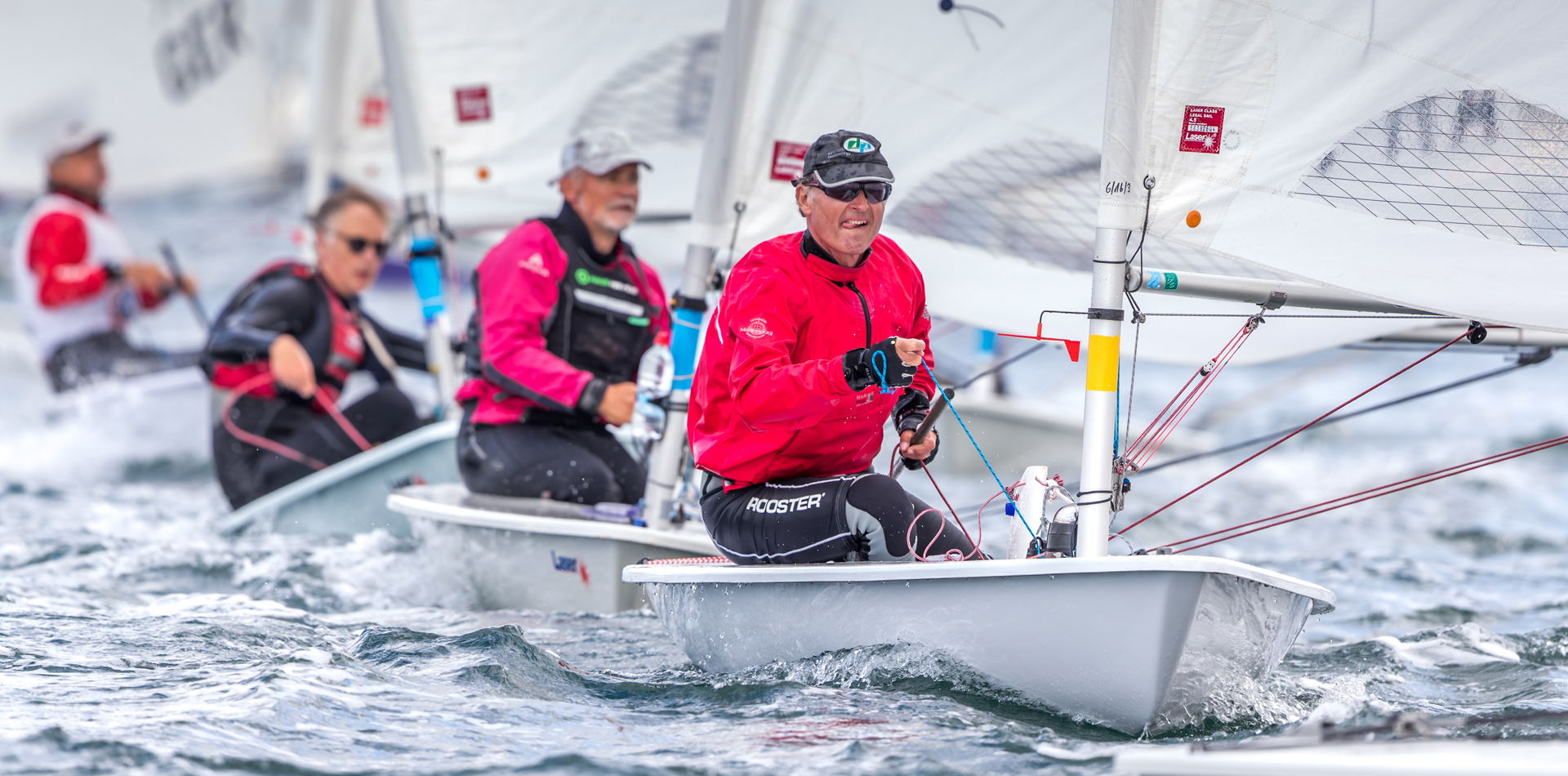
Where to Sail a Laser?
The Laser world is divided in to 6 different regions:
North America
Central and South America
Rest of World
with each region comprising of various member countries and districts. Being the most popular dinghy class in the world, there are Lasers in over 120 countries around the world, and it's likely there is a sailing club with at least one boat near you. For more information and contact details for an association in your country, ILCA have a directory of ILCA District Contacts .
Laser Racing
Since the inception of the class, the Laser has been considered one of the world's premiere racing classes thanks to its low-cost, availability and one design nature providing tight competition at all levels. Since 1996, Laser racing has been included at the Olympics, and many Olympic laser sailors have gone on to the pinnacles of high performance sailing. If you want to see the calibre of some of the sailors who have competed in the Laser, be sure to check out our ranking of the Top 10 Male Sailors and Top 10 Female Sailors of all time.

Outside of the Olympics, the ILCA class also organises World Championships for all rigs and age divisions on a yearly basis. These include the following regattas:
Masters World Championship (all divisions and rigs)
U21 World Championship (ILCA 6 and ILCA 7)
ILCA 4 Youth World Championship
ILCA 6 Women's World Championship
ILCA 6 Youth World Championship
ILCA 6 Men's World Championship
ILCA 7 Men's World Championship.
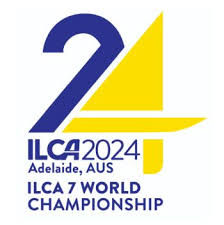
The full list and dates of upcoming ILCA World Championships can be found on the ILCA website .
Each ILCA region also hosts their own continental championships, and these also have a typically high attendance, and strong calibre of racing. The list of championships for each of the regions can be found here:
Oceania (out of date)
Starting Out with ILCA Sailing
If you're now feeling ready and excited to kick off your Laser journey, here's some things you might want to know before getting on the water
Getting a Boat
Due to their popularity, nearly every sailing club around the world will have at least one Laser lying around which you could try out before you buy your own boat. Many clubs also have rental programs where you can borrow or lease their boats for a minimal cost. This is a great way to get started and see if you enjoy the class.
If however, you're already at the point where you want to get your own boat, there will also be plenty of second hand boats which you could consider upgrading to. If you want some advice on looking for a used Laser, we have a complete second hand Laser Buyer's Guide .
Alternatively, I may have done such a good job convincing you to start ILCA sailing that you're ready to throw yourself in to it headfirst and buy a new boat. If that's the case, contact me at daniel.self@sail27 .com and I can help you find the best boat for you, or connect you with a great Laser dealer in your area.
Training and Coaching
Regardless of your ability, getting a coach is going to help you improve your sailing and much faster than you would by yourself. There are plenty of ILCA coaches all around the world, and the best resource I have found for finding a coach is ILCA's Coach directory . Another great option is to talk to your local sailing club or ILCA district association - they're sure to know someone in your area who can help you get started in the class.
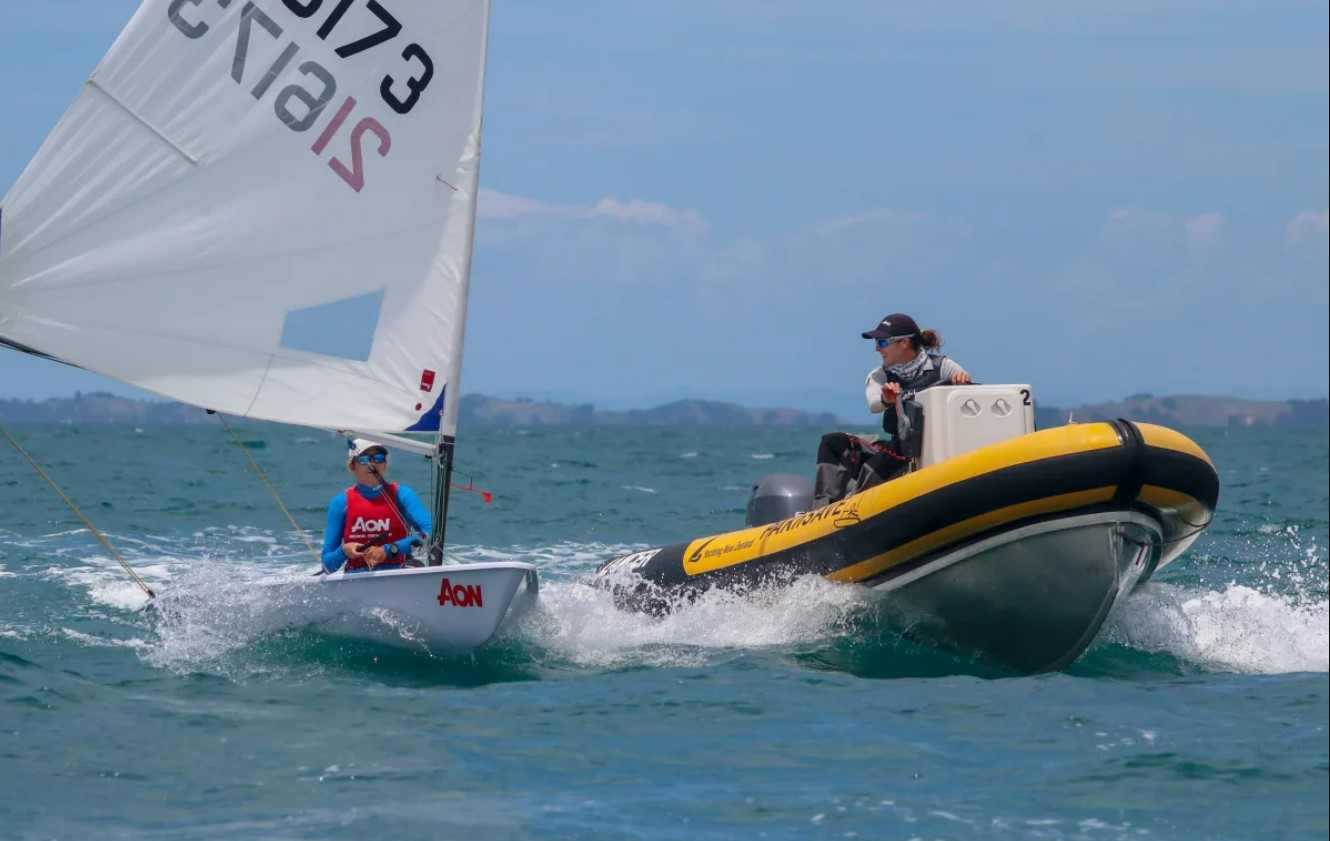
Since the COVID pandemic, online Laser coaching has become more accessible, and the guys at the International Sailing Academy have some great courses which can help you get from an intermediate to advanced Laser sailor.
You may however still be more of a 'book person' (that's how I started as well). If that's the case, I would recommend the RYA Laser Handbook. Although its a little older now, this is the most comprehensive guide to Laser sailing that I've read. Even as I got further in to my sailing journey, I would often refer back to this book for new tips.
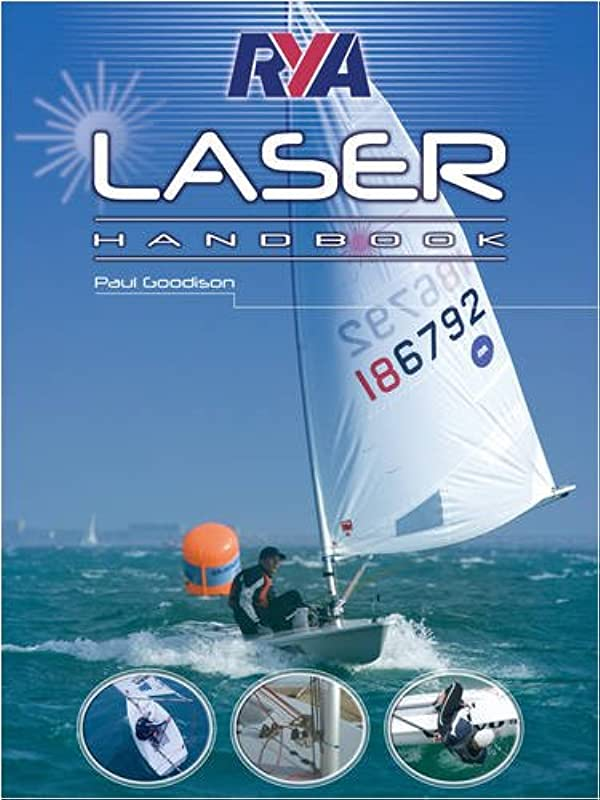
Wrapping Up
With all of that information, you should now be well versed on the ILCA class, and how you can get started in it. If you need any further information, feel free to comment below and I'll try to answer as well as possible. Otherwise, happy sailing and I'll see you on the water sometime soon!
Leave a comment
Please note, comments need to be approved before they are published.
- Choosing a selection results in a full page refresh.
- Opens in a new window.
Laser Sailboat: Mastering Performance and Techniques for SuccessThe Laser sailboat is a popular single-handed, one-design sailing dinghy known for its simplicity and performance. Designed by Ian Bruce and Bruce Kirby in 1970, the Laser has become the world's most popular adult and youth sailboat, with over 225,000 boats in 140 countries.  The boat's versatility is a significant contributing factor to its popularity, as it can be customized for different sailors and conditions using three interchangeable rigs of different sail areas. Laser sailboats offer both beginners and experienced sailors the joy of sailing with their user-friendly design and competitive performance capabilities . With a strong focus on sustainability, LaserPerformance, the leading producer of Laser sailboats, actively works to minimize the environmental impact of their products through ethical sourcing and manufacturing practices.  Key Takeaways
History and DevelopmentInception of the Laser SailboatThe Laser sailboat, an internationally popular one-design class, was conceived in 1969 by Bruce Kirby , a Canadian designer and former Olympian. He aimed to create an innovative design that was simple, affordable, and easy to sail. The prototype, originally called the "Weekender," was first introduced to the public in 1971 at the New York Boat Show . Its inaugural sail featured the insignia "TGIF," a reference to its early name. The boat's simplicity and performance attracted sailors of all skill levels, and by the early 1970s, it had become a commercial success. Laser Class EvolutionThe International Laser Class Association (ILCA) was established in response to the growing popularity of this sailboat. The ILCA sought to standardize the Laser's various specifications and ensure consistency across all boats. One of its key contributions has been the establishment of three interchangeable rigs: Standard, Radial, and 4.7 , which cater to different wind strengths and crew weights. This adaptability has made the Laser more accessible and appealing to a broader range of sailors. 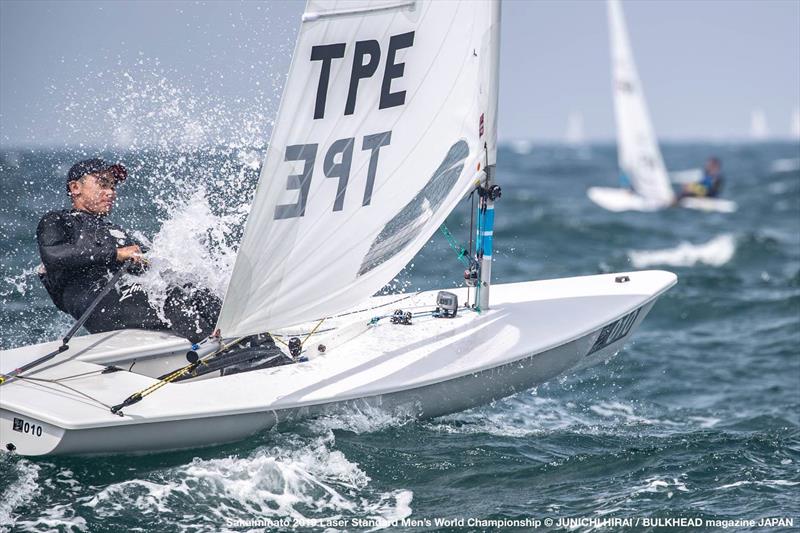 The Laser's rise as an international class was further solidified when it became an Olympic class in 1996. The boat's simplicity, strict one-design nature, and large worldwide fleet have made it a staple of the Olympic sailing program. Its design has remained relatively unchanged since its inception, with only minor modifications being made to improve performance and durability . The Laser remains a popular choice for sailors globally, both competitive and recreational. Its unique combination of simplicity, adaptability, and performance has ensured its continued success as a one-design class, and the International Laser Class Association continues to play a crucial role in maintaining the consistency of the boat and promoting the sport of sailing around the world. Laser Sailboat SpecificationsHull Design and ConstructionThe Laser sailboat is known for its simplicity and performance which was designed in 1970 by Ian Bruce and Bruce Kirby. The hull design contributes to its stability and speed in the water. Its construction uses a lightweight hull, ensuring optimal handling for sailors of various skill levels. This sailboat has been designed with durability and stability in mind. Its materials and construction techniques focus on withstanding the rigors of sailing while maintaining a consistent and smooth ride on the water. Rigging VariantsThere are three interchangeable rigging variants for the Laser sailboat, each offering different sail areas to accommodate sailor weight and wind strength. These variants include:
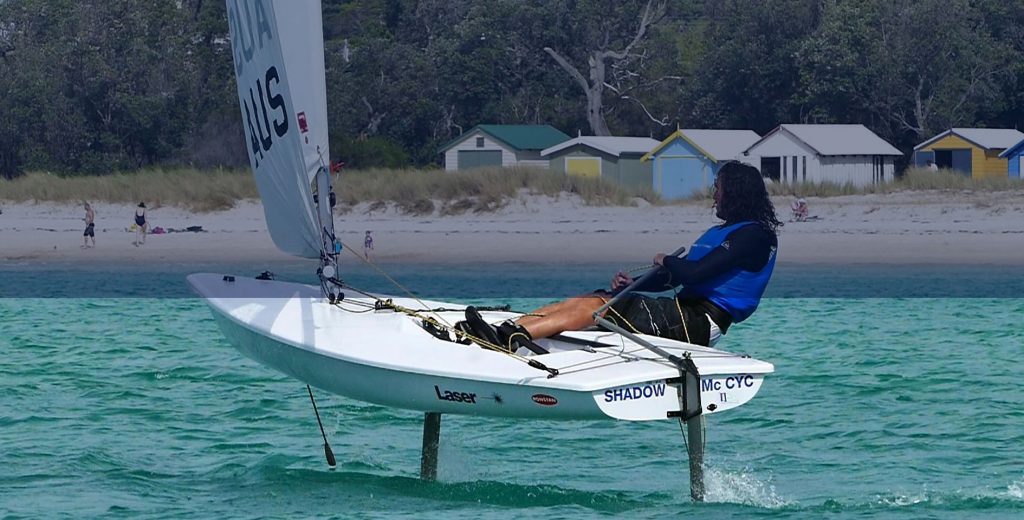 Dimensions and Sail MeasurementsThe Laser sailboat has specific dimensions and sail measurements which contribute to its design and performance. Here are the key dimensions:
The sail measurements for the three different rigging variants are as follows:
These specifications ensure consistent performance and ease of handling for sailors in various conditions and preferences. Sailing Dynamics and PerformanceHandling and ManeuverabilityThe Laser sailboat is known for its excellent handling and maneuverability, making it suitable for sailors of all skill levels. Its simplified rigging and straightforward design allow for easy control and quick response to changes in wind and water conditions. The Laser's hull weight is only 120 pounds (54.43 kg), contributing to its nimbleness on the water. Steering the Laser sailboat is mostly dependent on the sailor's body positioning and sail trimming techniques, giving more room for tactical excellence. Due to its responsive nature, the Laser rewards sailors who can make quick adjustments and maintain an optimal sail trim. Speed and StabilityThe Laser sailboat offers a good balance of speed and stability for both recreational and competitive sailing. Its relatively simple design, combined with a large sail area of 75 square feet (6.97 square meters) , enables it to reach impressive speeds for its size while maintaining stability. Key factors affecting the Laser's speed and stability include:
Sailor InteractionA significant aspect of the Laser sailboat's performance is the level of interaction between the sailor and the boat. As mentioned earlier, the Laser rewards sailors who possess excellent steering and trimming techniques, as well as a strong sense of tactical awareness. This interaction allows the Laser to perform at its best under various conditions. Sailors can further optimize their Laser sailboat's performance by:
Types of Laser SailboatsLaser sailboats are a type of one-design dinghies, which means that they follow strict design and manufacturing rules to ensure all boats in the Laser class are identical. The versatile laser class is widely popular as they offer different sail and rig sizes, catering to sailors of various ages, weights, and skill levels. Laser StandardThe Laser Standard , also known as the ILCA 7 , is the largest of the three laser rigs. This adult racing class boat features a 7.1 sqm sail, making it suitable for heavier and more athletic sailors. Laser RadialThe Laser Radial or ILCA 6 has a smaller 5.1 sqm sail. It is specifically tailored to lighter sailors, including women and youth sailors. The Radial's sail allows for better control and easier handling in various wind conditions. This provides a level playing field for a wide range of sailors in terms of age, weight, and experience level. Lastly, the Laser 4.7 or ILCA 4 features the smallest sail, measuring 4.7 sqm. This rig is designed for young sailors who are new to Laser sailing and need a more manageable sail size. The unique 4.7 lower mast section includes a pre-bend near the boom fitting, which allows the sail to depower more easily. This provides a more forgiving experience for new and younger sailors. Each Laser sailboat variant utilizes the same hull design, ensuring that the core sailing experience remains consistent across the board. This enables sailors to transition seamlessly between the different rig sizes as they progress in their sailing abilities. Competitive SailingRacing and RegattasThe Laser sailboat has been a popular choice in the sailing community for competitive racing due to its simplicity and one-design class. The Laser Class Association organizes races and regattas in various formats where sailors adhere to the class rules. The laser class has three different sail sizes - Laser Standard (ILCA 7), Laser Radial (ILCA 6), and Laser 4.7 (ILCA 4). These cater to sailors of different ages, weights, and abilities to participate in a single class. These characteristics make the Laser sailboat a widely sought-after option for sailors who are interested in competitive racing 1 . Olympic PresenceThe laser class has a strong presence in the Olympics, being recognized as an Olympic class sailing dinghy. Laser Standard (ILCA 7) and Laser Radial (ILCA 6) are the two divisions that have been part of the Olympic Games since 1996 and 2008, respectively. With its universal appeal and the level playing field it offers to sailors, the laser class has grown significantly in popularity over the years. It has achieved global recognition as a highly competitive sailing class in the Olympic Games. National and International ChampionshipsAlongside racing, regattas and their Olympic presence, the Laser Class Association also organizes various national and international championships. Among these events are the ILCA 4 Youth World Championship, scheduled to happen in Viana do Castelo, Portugal, in June 2024 2 . The World Championships typically attract top sailors from different nations, competing for the title of world champion. A list of major championships for laser sailing includes:
In addition to these flagship events, many national championships are also held regularly by various Laser Class Associations around the world. This fosters the growth of talented sailors and promotes the spirit of competition within the laser sailing community. Maintenance and UpkeepRoutine Care and MaintenanceLaser sailboats are known for their durability, but regular maintenance is essential to ensure their longevity and maintain resale value. Inspect the hull and foils for any damage or signs of wear. Also, check the steering systems, such as rudder and tiller, ensuring they are functioning smoothly without any wiggles. Regularly inspect tiller extension fittings for cracking and signs of potential breakage. Cleaning your sailboat after each use will help minimize the chance of damage from dirt, salt, and debris. Store sails, lines, and other equipment properly to avoid moisture damage, mold, and mildew growth. Verifying the functionality of the autobailer should also be a part of the routine maintenance process. Transport and StorageTransporting a Laser sailboat can be done with relative ease, as they are lightweight and their compact size allows for cartop transport. When cartopping your Laser, use appropriate padding and straps to secure the boat without causing damage to the hull, mast, or other components. As for storage, it is essential to keep your Laser sailboat in a covered and well-ventilated area, preferably on a dolly or custom cradle that supports the gunwales to prevent unnecessary stress on the hull. Moreover, ensure the mast and other equipment are safely stored alongside the boat. Periodically inspect the boat during storage to check for any signs of damage, moisture buildup, or rodent infestation. Laser Sailboat Community and CultureThe Laser sailboat has built a strong sense of community that extends across different countries. This community primarily revolves around clubs, associations, and social and recreational sailing. Clubs and AssociationsA significant part of the Laser sailing community is the involvement in clubs and associations at various levels. The International Laser Class Association (ILCA) is the governing body that brings together Laser sailors from all around the world. This association is responsible for maintaining the one-design principles, organizing international events, and promoting Laser sailing as a high-quality, competitive sport. At a local level, numerous clubs are home to passionate Laser sailors. Club racing is a popular form of competition within the community, offering a friendly yet competitive environment for sailors to test their skills. There are also regional associations supporting the growth of the Laser sailing community in their respective areas. Example of Laser clubs:
Social and Recreational SailingThe Laser sailboat's appeal extends beyond competitive racing, with many enthusiasts enjoying the boat for its simplicity and versatility in social and recreational sailing. The Laser community is known for organizing events that cater to various interests and skill levels, ensuring that everyone has a chance to find their niche. Some common social and recreational sailing events include:
Frequently Asked QuestionsWhat factors determine the price of a Laser sailboat?When looking for a Laser sailboat, various factors such as brand, condition, materials used, size, and additional features all play a role in determining the price . A brand-new Laser will typically cost more than its used counterpart. Higher quality materials and improved technology can also increase the price, as well as customizable options and additional accessories. To find the right Laser sailboat at a competitive price , it's essential to compare offerings from various vendors and take time to evaluate factors like reputation and warranty. Sailing Chandlery provides more information on Laser sailboats and their prices. What are the essential specifications to look for in a Laser sailboat?When considering a Laser sailboat, pay attention to details like hull weight , rig size, sail size, and weight capacity , as these will affect the boat's performance and suitability for the intended use. A standard Laser sailboat generally has a hull weight of 125 lbs or 56.7 kg , with different sail sizes available, such as ILCA 4 (Laser 4.7), ILCA 6 (Laser Radial), and ILCA 7 (Laser Standard). Each sail size is designed for sailors within specific weight ranges, providing the best performance and stability. How can I find a reputable vendor for Laser sailboat kits?To find a reputable vendor for Laser sailboat kits, research different suppliers, seek recommendations from fellow sailors, and read reviews from previous customers. Online platforms like West Coast Sailing offer resources and information on Laser sailboats, including detailed guides, FAQs, and where to find quality suppliers. What is the recommended weight capacity of a standard Laser sailboat?The recommended weight capacity for a Laser sailboat varies depending on the rig size. The ILCA 6 (Laser Radial) is suitable for sailors between 60 kg and 75 kg , while the ILCA 7 (Laser Standard) is better suited for sailors weighing 75 kg to over 90 kg. The ILCA 4 (Laser 4.7) is designed for younger and lighter sailors. When choosing a Laser sailboat, ensure that the rig size matches the intended user's weight range for optimal performance. What are the characteristics that define the best Laser sailboats on the market?The best Laser sailboats on the market offer a combination of durability, performance, and ease of use. Look for models with robust construction. They are made from high-quality materials to withstand harsh sailing conditions. Additionally, seek sailboats with easy-to-use rigging systems and low-maintenance designs. Also, make sure they have support from reputable manufacturers. This ensures they meet strict class specifications. Is sailing a Laser suitable for beginners and what are the challenges involved?Sailing a Laser is generally suitable for beginners. These boats are known for their simplicity, ease of use, and responsive handling. However, beginners should be prepared for some challenges. These challenges include mastering the correct body positioning and balance or adjusting to different wind and weather conditions. It's essential for new Laser sailors to familiarize themselves with the boat's assembly and rigging process and seek guidance from experienced sailors or trainers. This ensures a safe and enjoyable sailing experience. Related Articles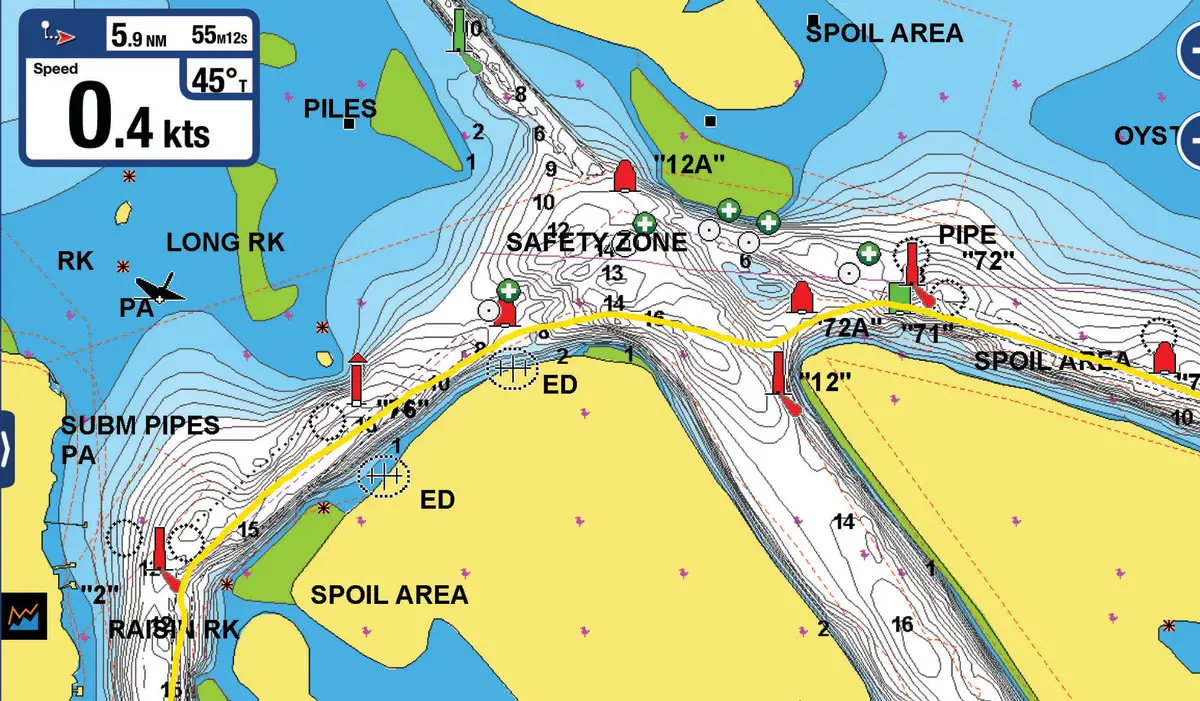 Intracoastal Waterway Map: A Comprehensive Guide for Navigation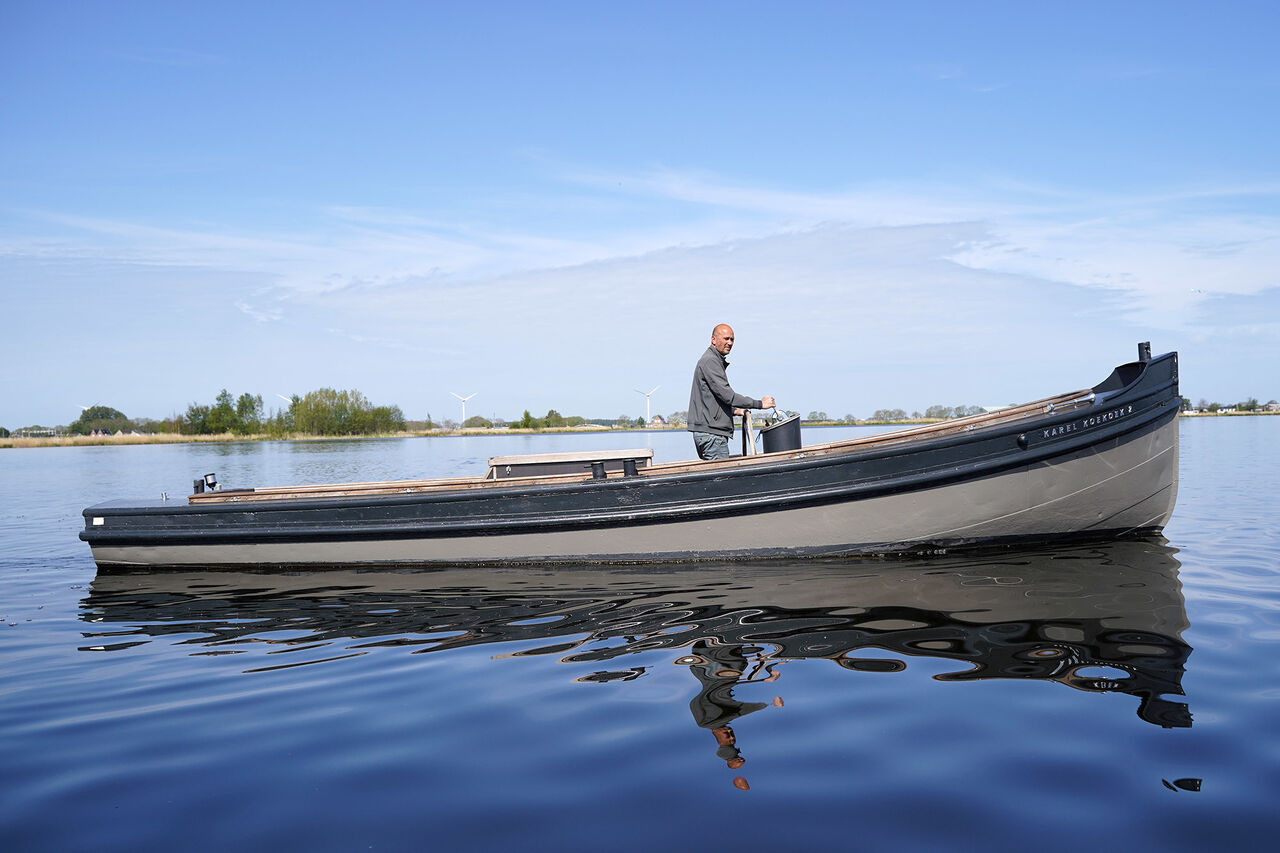 Sloep Boats: A Comprehensive Guide for Enthusiasts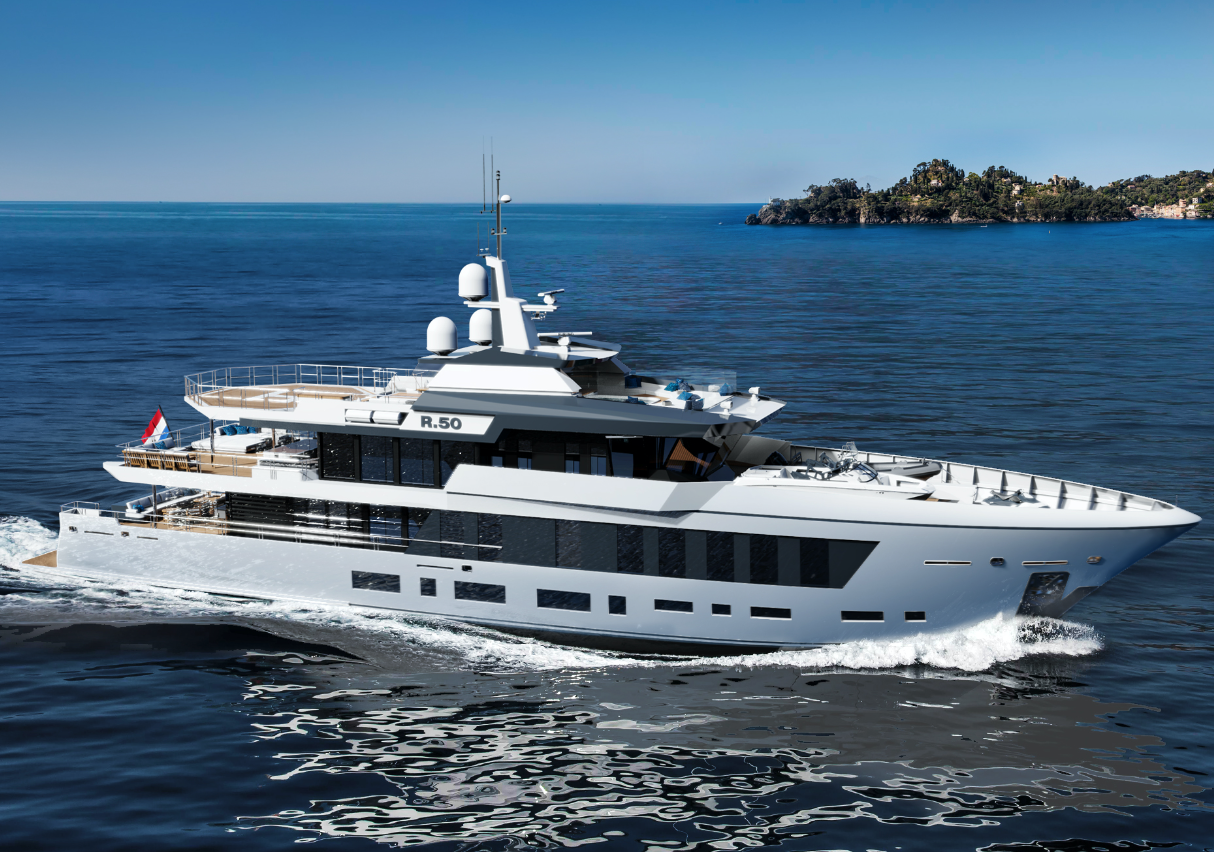 Yatch Essentials: Yes, we spelled it "Yatch" on Purpose to Match Common Search Trends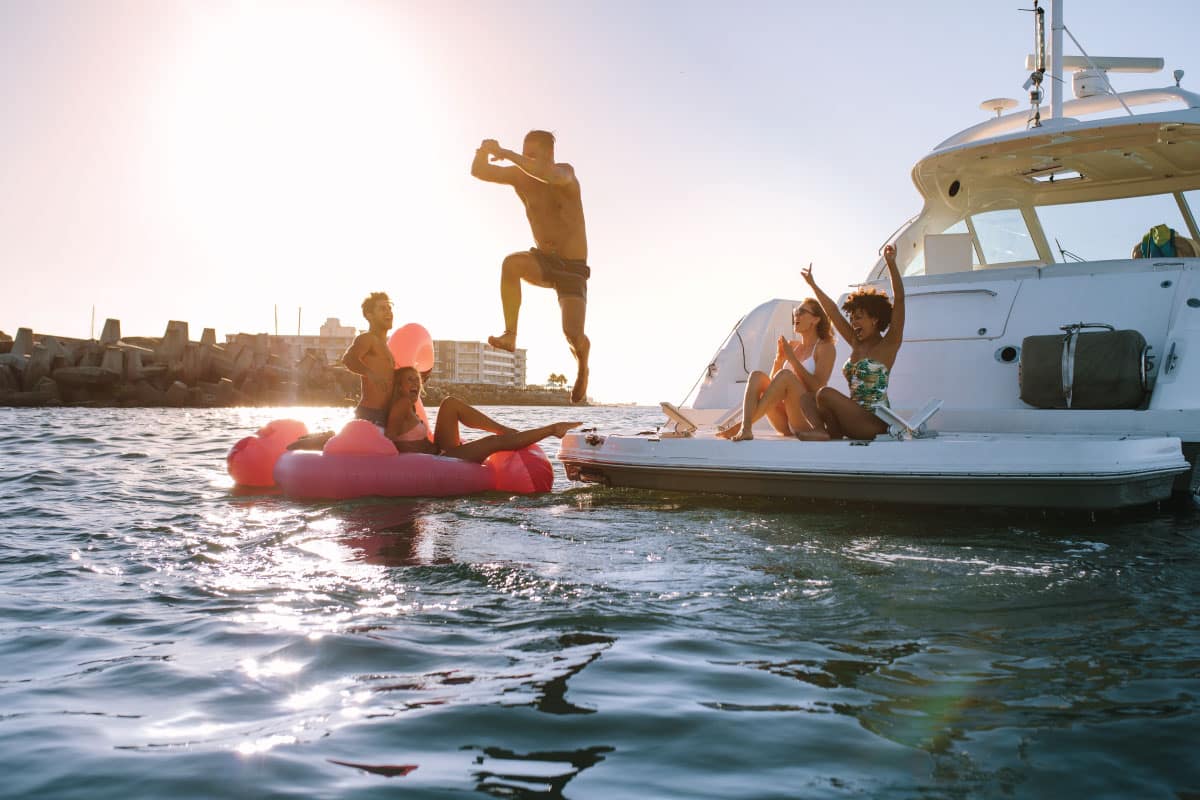 How Much is a Boat: Essential Factors and Pricing Guide Paddle Board Fishing: Ultimate Guide for Anglers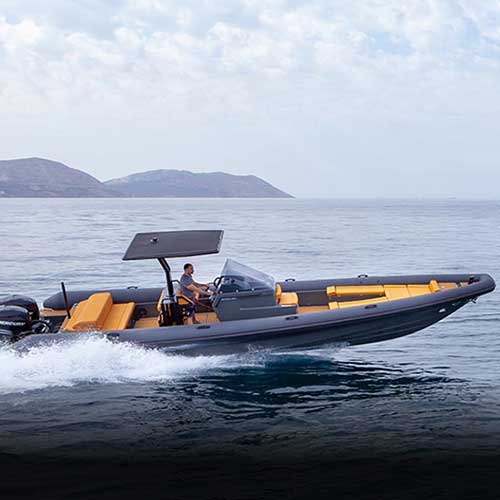 Onda Boats USA- Ups Their Excellence & ExclusivityTypes of Tides: Understanding Their Differences and Causes Best Beach Chairs 2024: Top Picks for Ultimate Comfort and StyleFree Shipping Over $99 - 366 Day Returns - Expert Advice 
Sails & BattensShop sails and battens for Laser / ILCA sailboats including Standard / 7 Rigs, Radial / 6 Rigs, and 4.7 / 4 Rigs. West Coast Sailing offers sails from both North and Hyde with Free Sail Numbers and Installation on all new class-legal racing sails. Batten sets and practice/training sails are also available. Our expert team will have your new sail numbered and out the door quickly with fast, free shipping on qualifying orders. Find out why thousands of Laser / ILCA sailors around the world trust West Coast Sailing for all their sail and parts needs.
 ILCA 7 Sail MK2 (North)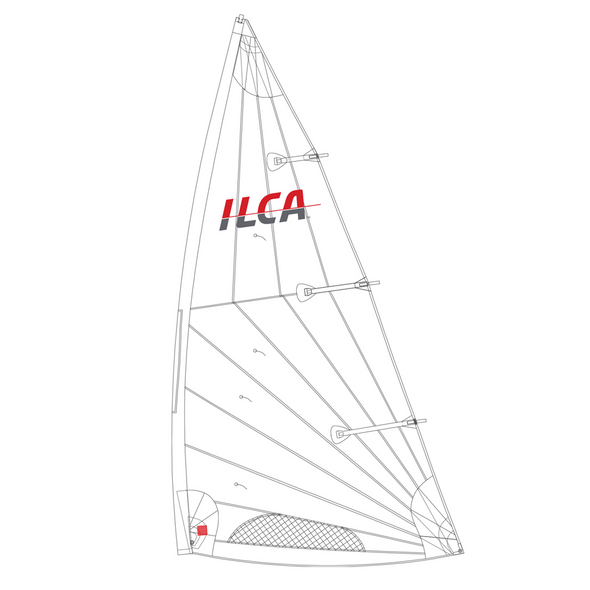 ILCA 7 Sail MK2 (Hyde) ILCA 6 Sail (North) ILCA 6 Sail (Hyde)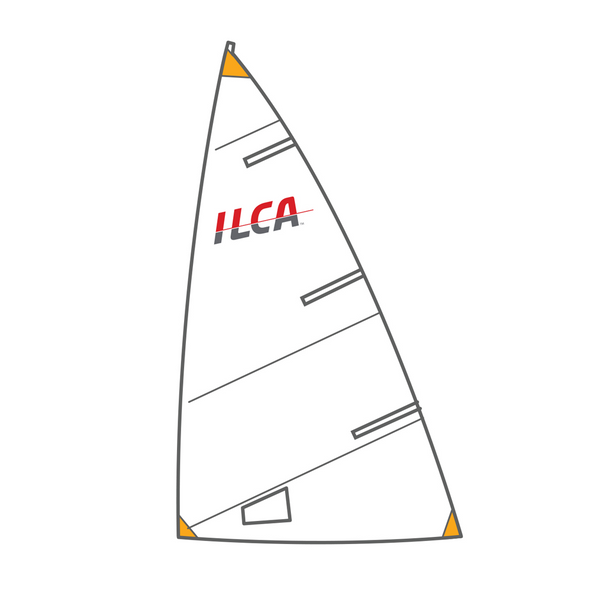 ILCA 4 Sail (North)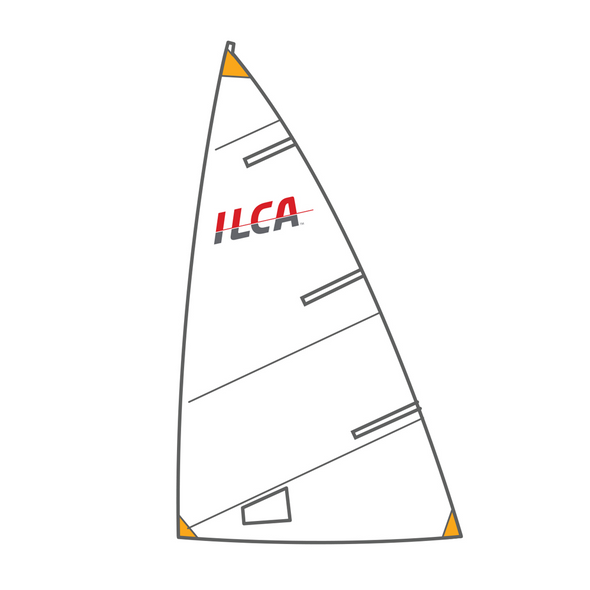 ILCA 4 Sail (Hyde) ILCA / Laser Batten Set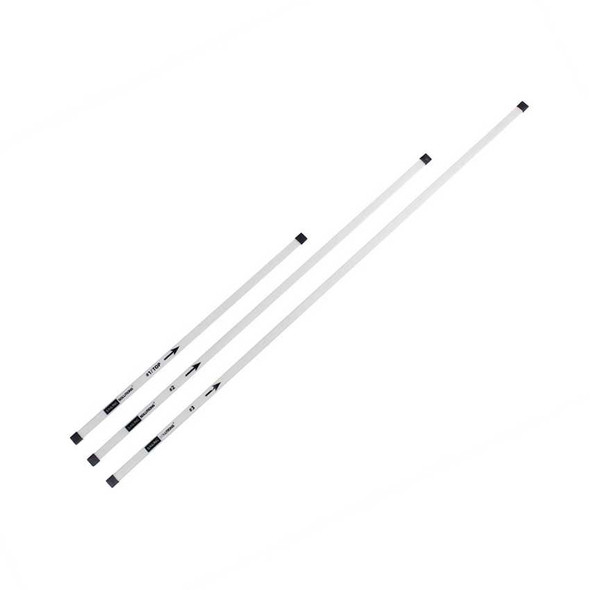 Laser Mark 2 Batten Set (Rooster)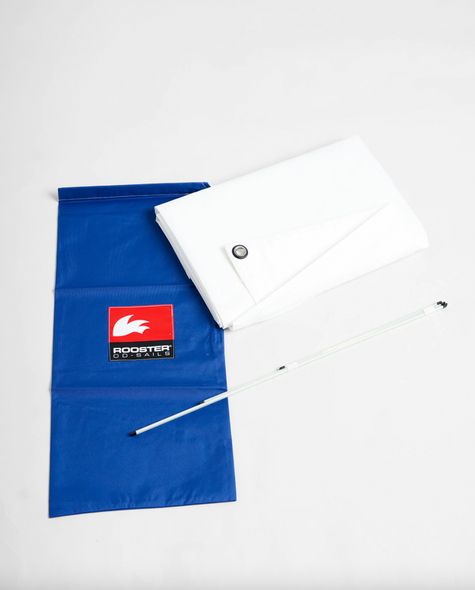 Laser Standard Training Sail (Rooster)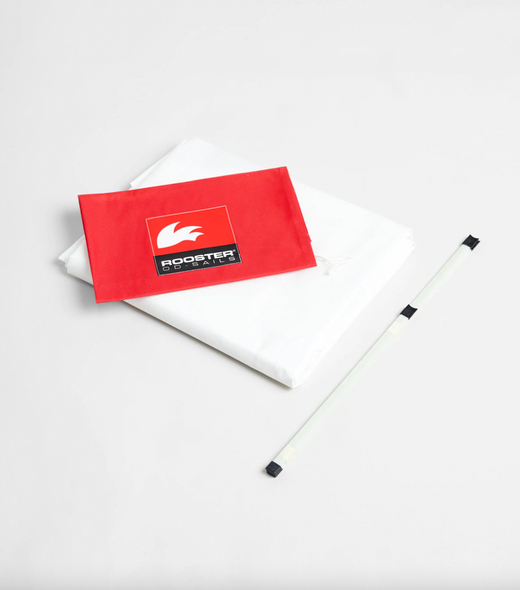 Laser Radial Training Sail (Rooster) Laser 4.7 Training Sail (Rooster) Laser Batten Set (Rooster)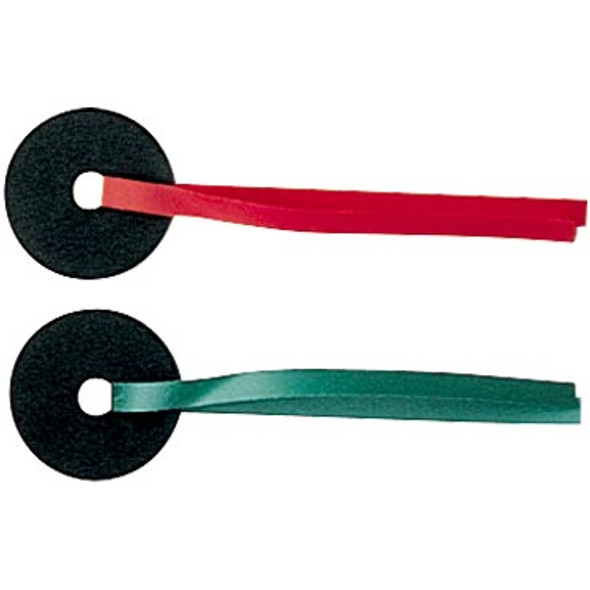 Ronstan Tell Tales Yarn Tell Tales Laser / ILCA Rolled Sail Bag (Fast Canvas)  Sail Number 12" Pre-Cut Euro
Adding your products to cartLaser / ilca sails - standard/7, radial/6, 4.7/4, free sail numbers & installation + free shipping. West Coast Sailing was the first to provide free sail numbers and we still do! All ILCA / Laser racing sails include free sail numbers and sail number installation . Easily enter your sail number, select your preferred sail number style, and add a country code (if you need one). Enjoy free ground shipping on qualifying orders with expedited shipping options available. We strive to ship sails within one business day so that you can get out on the race course with your new sail quickly. Laser / ILCA Sail Sizes & OptionsLaser Standard / ILCA 7 - The 'standard' sized Laser sail (76 square feet) is the most common, particularly on older boats, and used with the 'standard' lower mast section. Laser Standard Sails are now only available in the new Mark II version, which is a radial cut sail, from both North Sails and Hyde Sails and are ILCA class approved for racing. Laser Radial / ILCA 6 - The 'radial' sized Laser sail (62 square feet) is used with the 'radial' lower mast section, which is a few feet shorter than the 'standard' lower mast section to accommodate the smaller sail and allow the rig to depower more easily. Laser Radial Sails are also available from North Sails and Hyde Sails and are ILCA class approved for racing. Laser 4.7 / ILCA 4 - The smallest of the three rig/sail sizes, the '4.7' Laser sail (50 square feet) is used with the 4.7 lower mast section, which is shorter than the 'radial' lower mast section and pre-bent just above the deck line to depower the rig. This sail size is commonly used for youth sailors just getting into the Laser class who are not big enough to manage either the Radial or Standard size rig. Laser 4.7 Sails are also available from North Sails and Hyde Sails and are ILCA class approved for racing. Laser & ILCA Practice Sails - While not not class legal for racing, these 'practice' sails (sometimes called 'replica' sails) are cut from a slightly heavier cloth for longer life but to the same pattern as class-approved sails. They have a similar feel to using a class-approved sail but are less expensive, making them great for training or for recreational sailors. We currently offer 'practice' sails from Rooster, which include battens and a bag. North Sails vs Hyde Sails - Myths & FactsThere has been much debate over the years about the 'differences' between North and Hyde Laser sails, most of which is myth. We've sold thousands of Laser sails in the last 14+ years and worked with sailors around the world, so here are some things we've learned. Myths about Laser Sails
The Facts About Laser & ILCA Sails (Real World Experience) Many of our customers swear by Hyde for serious racing because they last longer and have a better shape. The flip side is that some of our customers prefer the initial 'setup' of the North, even if it is perceived to have a slightly shorter lifespan. Keep in mind, we are dealing on the fringes of what is real and what is perceived. Top level sailors will go fast with either sail and intermediate sailors get a big boost from a new sail no matter what the brand. If you care for each sail the same, keep it clean and be careful not to flog it needlessly at the dock or while sailing, either brand should deliver solid and very similar results over it's lifespan. Subscribe To Our NewsletterSign up for our newsletter to receive exclusive discounts, new product announcements, and upcoming sales.  Step-by-Step Guide: Learn How to Rig a Laser Sailboat for Optimal PerformanceAlex Morgan 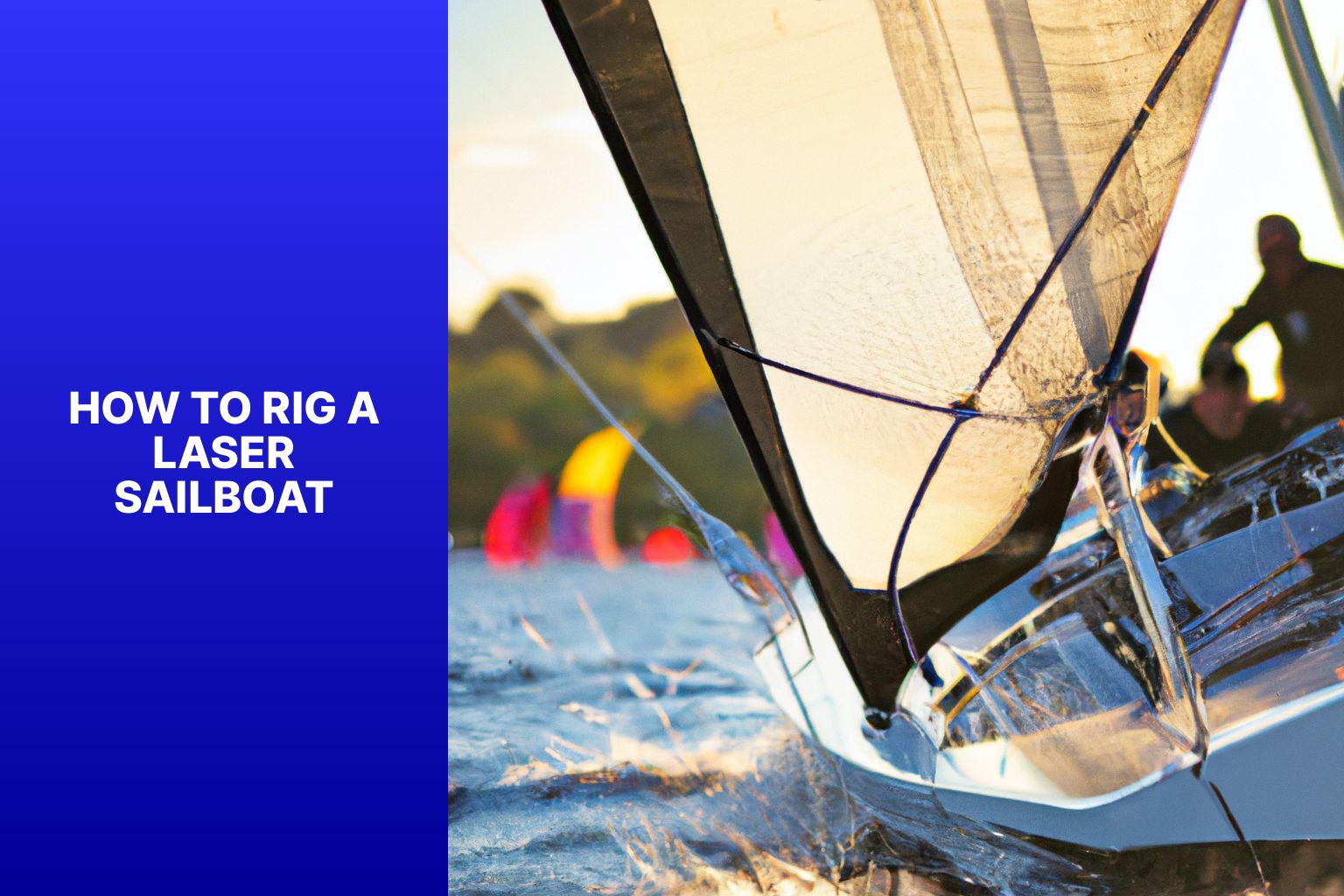 Rigging a Laser sailboat is an essential skill for anyone interested in sailing. Properly rigging a sailboat ensures that all components are securely in place, allowing for a safe and enjoyable sailing experience. This article will provide an introduction to rigging a Laser sailboat, explain the different components involved, and provide a step-by-step guide on how to rig the boat. It will offer tips and best practices to follow while rigging, as well as common mistakes to avoid. Whether you are a beginner or an experienced sailor, mastering the art of rigging a Laser sailboat is crucial for a successful outing on the water. Key takeaway:
Understanding the Components of a Laser SailboatAs we dive into the world of laser sailboats , it’s crucial to understand the nuts and bolts that make up these vessels. In this section, we’ll take a look at the key components that come together to form a laser sailboat . From the sturdy mast to the versatile boom , and the intricate rigging lines to the billowing sail , we’ll navigate through each element, unraveling their significance and how they contribute to a successful sailing experience. Get ready to explore the inner workings of laser sailboats and gain a deeper appreciation for their craftsmanship. The mast is an essential component of a Laser sailboat as it provides vital support and stability to the sail. Constructed from either lightweight and strong carbon fiber or aluminum, the mast is designed to withstand the powerful forces of wind and water. When rigging a Laser sailboat, the first crucial step is to carefully insert the mast into the mast step located at the base of the boat’s hull. Once inserted, it is important to raise the mast upright and secure it using a mast clamp or collar for stability. The next important task is to attach the sail to the mast. This is achieved by raising the sail and securing it using halyards or sail ties. It is vital to properly tension the sail in order to optimize performance and maintain control while sailing. Throughout the rigging process, it is imperative to regularly check the mast for any signs of damage or wear. It is essential to promptly address any cracks or weaknesses to ensure the safety of both the boat and the sailor while out on the water. In order to prolong the longevity and enhance the performance of the mast, regular inspections, cleaning, and lubrication of the mast fittings are necessary. This will help prevent corrosion and ensure smooth operation during sailing sessions. The boom is a necessary part of a Laser sailboat . It is a horizontal spar that extends from the mast. This sturdy pole controls the shape and position of the sail. Attaching the boom is a crucial step in rigging a Laser sailboat . It involves sliding one end into a fitting on the mast called the gooseneck . The boom is secured with a boom vang , a line that runs from the mast to the boom . This vang controls the tension and angle of the boom , allowing sailors to adjust the sail’s shape and power. Properly attaching and adjusting the boom is essential for efficient sailing. It allows the sailor to control the sail’s position and shape based on wind conditions. Adjusting the boom optimizes the sail’s power and performance, maximizing speed and maneuverability. The use of booms in sailing has a long history. It originated from the use of horizontal spars to control the shape of sails on large sailing ships. Over time, booms have become an integral part of smaller sailboats, enhancing sailing performance and control. Nowadays, booms are used in various sailboat designs, including the Laser . Rigging LinesTo properly rig a Laser sailboat, it is important to understand the components involved, including the rigging lines. Here are the steps to follow: 1. Begin by setting up the main halyard. Attach it to the head of the sail and run it through the top of the mast. 2. Next, secure the main sheet. Attach one end to the boom and run it through the blocks on the back of the boat. 3. Connect the cunningham line. Start by attaching one end to the cunningham eyelet on the front of the mast and run it through the block on the boom. 4. Establish the vang line. Attach one end to the vang fitting on the mast and run it through the block on the boom. 5. Attach the outhaul line. Connect one end to the outhaul fitting on the boom and run it through the outhaul block on the back of the boom. 6. Secure the traveler line. Attach one end to the traveler block and run it through the block on the back of the boat. By following these steps, you can effectively rig the rigging lines on a Laser sailboat. It is important to check the lines for wear or damage before sailing to ensure a safe and enjoyable experience. The sail is a crucial component of the Laser sailboat. It efficiently harnesses the power of the wind and propels the boat forward. The sail is carefully constructed using durable and lightweight materials, typically synthetic fibers like Dacron or Mylar . The sail is securely attached to both the mast and the boom, forming a triangular shape that effectively captures the wind. The size of the sail plays a significant role in the boat’s overall performance. Sails of smaller sizes are ideal for lighter winds, whereas larger sails are more effective in stronger winds. To properly rig the sail, it is important to securely attach the boom to the mast. Then, the sail should be hoisted up the mast, ensuring correct alignment and tension. The cunningham and outhaul lines can be adjusted to control the shape and tension of the sail. Taking proper care and maintenance of the sail is crucial for its longevity and optimal performance. Prolonged exposure to direct sunlight should be avoided, as it can cause damage to the sail. Regular inspection for wear and tear is necessary, and any necessary repairs or replacements should be made promptly. A well-rigged sail is essential for a successful sailing experience, allowing the boat to efficiently capture the power of the wind and maneuver through the water. By familiarizing yourself with the various components and following the correct rigging procedures, you can ensure that your Laser sailboat is ready for an exciting and rewarding adventure on the water. Step-by-Step Guide on How to Rig a Laser SailboatLooking to hit the waves with your Laser Sailboat ? Mastering the rigging process is key to a successful sailing experience. In this step-by-step guide , we’ll walk you through the essentials of rigging a Laser Sailboat . From stepping the mast to hoisting and adjusting the sail, we’ve got you covered. Get ready to set sail with confidence and navigate the waters like a pro ! Stepping the MastTo properly step the mast of a Laser sailboat, you should follow these steps:
By following these steps, you can guarantee that the mast is properly stepped and securely fixed, providing a strong foundation for rigging the rest of the Laser sailboat. Attaching the BoomTo attach the boom to a Laser sailboat , follow these steps: 1. Position the boom near the mast , aligning the gooseneck with the mast slot . 2. Slide the boom all the way through the mast slot . 3. Align the holes on the boom fitting with the holes on the mast fitting . 4. Insert the boom bolt through the holes and securely fasten it with a nut if needed. 5. Check that the boom is securely attached and moves smoothly along the mast . True story: When rigging my Laser sailboat for the first time, I struggled to align the boom fitting with the mast fitting . After a few attempts, I realized I needed to adjust the boom’s position slightly for proper alignment. Once adjusted, the boom slid into place smoothly, and I secured it with the bolt . This experience taught me the importance of attention to detail when rigging a sailboat. Securing the Rigging Lines To secure the rigging lines on a laser sailboat, follow these steps:
By securing the rigging lines on a laser sailboat, the sail will be correctly positioned and tensioned for optimal performance on the water. Hoisting and Adjusting the SailIn order to hoist and adjust the sail properly, ensure that the halyard is properly attached to the sail and securely fastened . Stand towards the mast and pull on the halyard to raise the sail up the mast. Continue pulling until the sail is fully hoisted to the top of the mast, making sure there are no twists or tangles. To achieve the desired sail shape based on wind conditions and personal preference, adjust the halyard tension. You can tighten or loosen the halyard to adjust the sail shape. Tightening the halyard will flatten the sail, while loosening it will add more depth . For different wind conditions, make small adjustments and observe how the sail responds to find the optimal setting. Once the desired sail shape is achieved, secure the halyard by tying it off or using a cleat. Let me share a true story: One time during a race, while I was hoisting the sail on my Laser sailboat, a sudden gust of wind caught the sail and caused it to billow dramatically . Fortunately, I quickly adjusted the halyard tension and regained control of the sail. This experience taught me the importance of properly hoisting and adjusting the sail to maintain stability and control on the water. Tips and Best Practices for Rigging a Laser Sailboat – Start with a well-maintained boat: Check for any damages or wear and tear that may affect the rigging process. – Properly attach the mast: Use the mast step to securely attach the mast to the boat and ensure proper alignment. – Attach the boom: Connect the boom to the mast using the gooseneck fitting and make sure it is securely fastened and aligned. – Attach the mainsheet: Thread the mainsheet through the mainsheet blocks and tightly secure it to the boom for proper control while sailing. – Attach the sail: Carefully center and align the sail on the mast, securing all sail ties to prevent it from coming loose. – Tension the rigging: Optimize sailboat performance by adjusting the rigging tension to control the sail shape and maximize speed. – Check all fittings and lines: Before setting off, inspect all connections to ensure they are secure and in good condition, including the halyard, vang, cunningham, and outhaul. A sailor followed all the rigging steps meticulously, resulting in a well-rigged laser sailboat that effortlessly glided through the water during a regatta. Their attention to detail paid off as they sailed to victory, impressing their competitors with their skills and precision. This experience highlights the importance of following best practices and tips for rigging a laser sailboat to achieve success on the water. Common Mistakes to Avoid while Rigging a Laser SailboatWhen rigging a Laser sailboat, it is important to avoid common mistakes that can negatively affect performance and safety. Here are some key points to keep in mind: 1. Correct sail positioning: Make sure to hoist and tension the sail properly. Incorrect positioning can result in poor trim and reduced speed. 2. Adequate rig tension: Proper tension is crucial for optimal performance. Avoiding insufficient tension will prevent a loose sail and decrease control. 3. Mast alignment: Always align the mast with the boat’s centerline. Deviation from this alignment can affect weight distribution and stability. 4. Efficient use of controls: Take the time to familiarize yourself with the cunningham, vang, and outhaul controls. Proper use of these controls will allow for adjustments to changing conditions. 5. Regular maintenance: Regularly inspect the rigging for any signs of wear or damage. Neglecting maintenance can lead to equipment failure and compromise safety. By avoiding these common mistakes, you will enhance your sailing experience and ensure optimal performance. Remember to practice proper rigging techniques and comply with Laser Class rules. Some Facts About How To Rig A Laser Sailboat:
Frequently Asked QuestionsFaqs on how to rig a laser sailboat, 1. how do i assemble the mast of a laser sailboat. To assemble the mast, slide the bottom of the top half into the top of the bottom half. Then, slide the sail over the mast using the pocket along one side of the sail. Insert the battens into the sail and ensure they are secured. 2. How do I attach the boom and rig the mainsheet?Attach the front end of the boom to the gooseneck on the mast. Then, walk around to the flapping end of the sail while holding the boom on the gooseneck. Run the outhaul rope through the eye at the end of the boom and cleat it off. Rig the mainsheet by tying one end around the eye on the bottom of the pulley at the end of the boom and running the other end through the traveler on the stern of the boat, through the pulley on the end of the boom, and down through the main block at the front of the cockpit. 3. How do I stand up the mast and attach the boom vang?To stand up the mast, carefully lift it and place it into the mast step at the front of the laser. Use the middle of the mast for better control and walk forward while pushing the sail up. As for the boom vang, attach it to the bottom of the mast and slide it into the metal clip on the bottom of the boom. Pull down on the hanging line and cleat it off. 4. How do I attach the rudder, tiller, and daggerboard?Attach the rudder by inserting it into place and securing it with the tiller. Make sure the lift stop clicks into place. For the daggerboard, tie a long loop of elastic to the eye at the end of the dagger board and secure it to the boat. 5. What should I pack and check before rigging a Laser sailboat?Before rigging, check the weather forecast and pack all necessary gear, including the sail, ropes, foils, and spars. Also, ensure that the hull plug is screwed into the drain hole in the stern of the boat. Check that you have a life jacket and other personal safety equipment. 6. How should I tidy up and secure the boat before launching?Before launching, tidy up the area and ensure the boat is secure. If needed, detach the trailer or dolly from the car and position it close to the launch area. Double-check that all gear is packed and ready. When in deep water, always put on a rash vest and googles for added protection. About the author Leave a Reply Cancel replyYour email address will not be published. Required fields are marked * Save my name, email, and website in this browser for the next time I comment. Latest posts The history of sailing – from ancient times to modern adventuresHistory of Sailing Sailing is a time-honored tradition that has evolved over millennia, from its humble beginnings as a means of transportation to a beloved modern-day recreational activity. The history of sailing is a fascinating journey that spans cultures and centuries, rich in innovation and adventure. In this article, we’ll explore the remarkable evolution of…  Sailing Solo: Adventures and Challenges of Single-Handed SailingSolo Sailing Sailing has always been a pursuit of freedom, adventure, and self-discovery. While sailing with a crew is a fantastic experience, there’s a unique allure to sailing solo – just you, the wind, and the open sea. Single-handed sailing, as it’s often called, is a journey of self-reliance, resilience, and the ultimate test of…  Sustainable Sailing: Eco-Friendly Practices on the boatEco Friendly Sailing Sailing is an exhilarating and timeless way to explore the beauty of the open water, but it’s important to remember that our oceans and environment need our protection. Sustainable sailing, which involves eco-friendly practices and mindful decision-making, allows sailors to enjoy their adventures while minimizing their impact on the environment. In this… ⛵️ June Savings - End Tomorrow ⛵️ 
Your Cart is Empty
Tax included and shipping calculated at checkout Order before midday Monday to Friday and we will ship your order the same day.

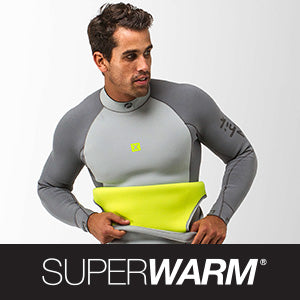 Zhik Superwarm
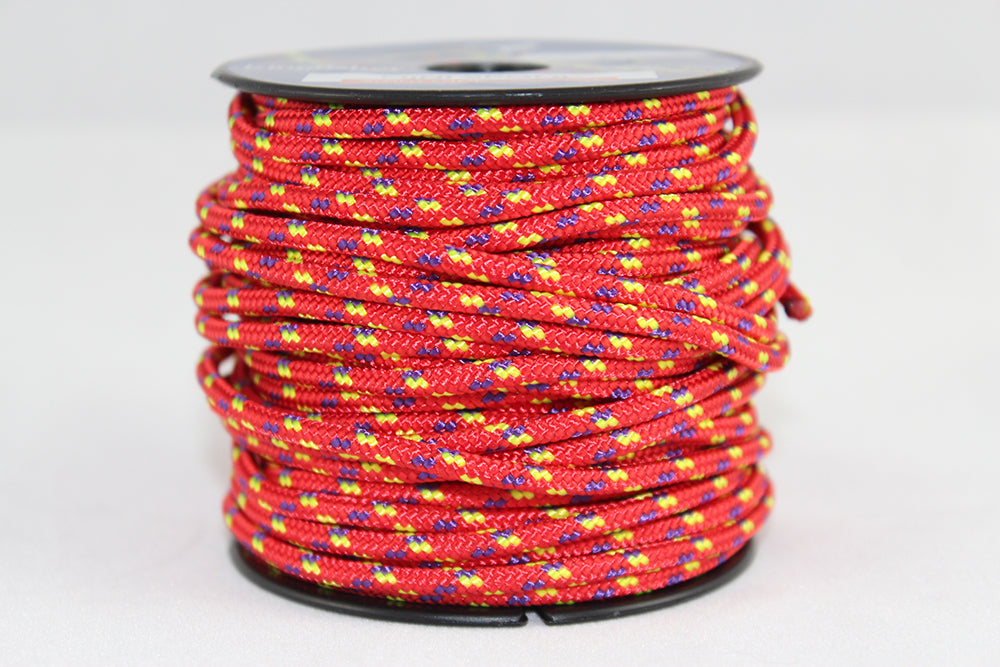 Mini Spools
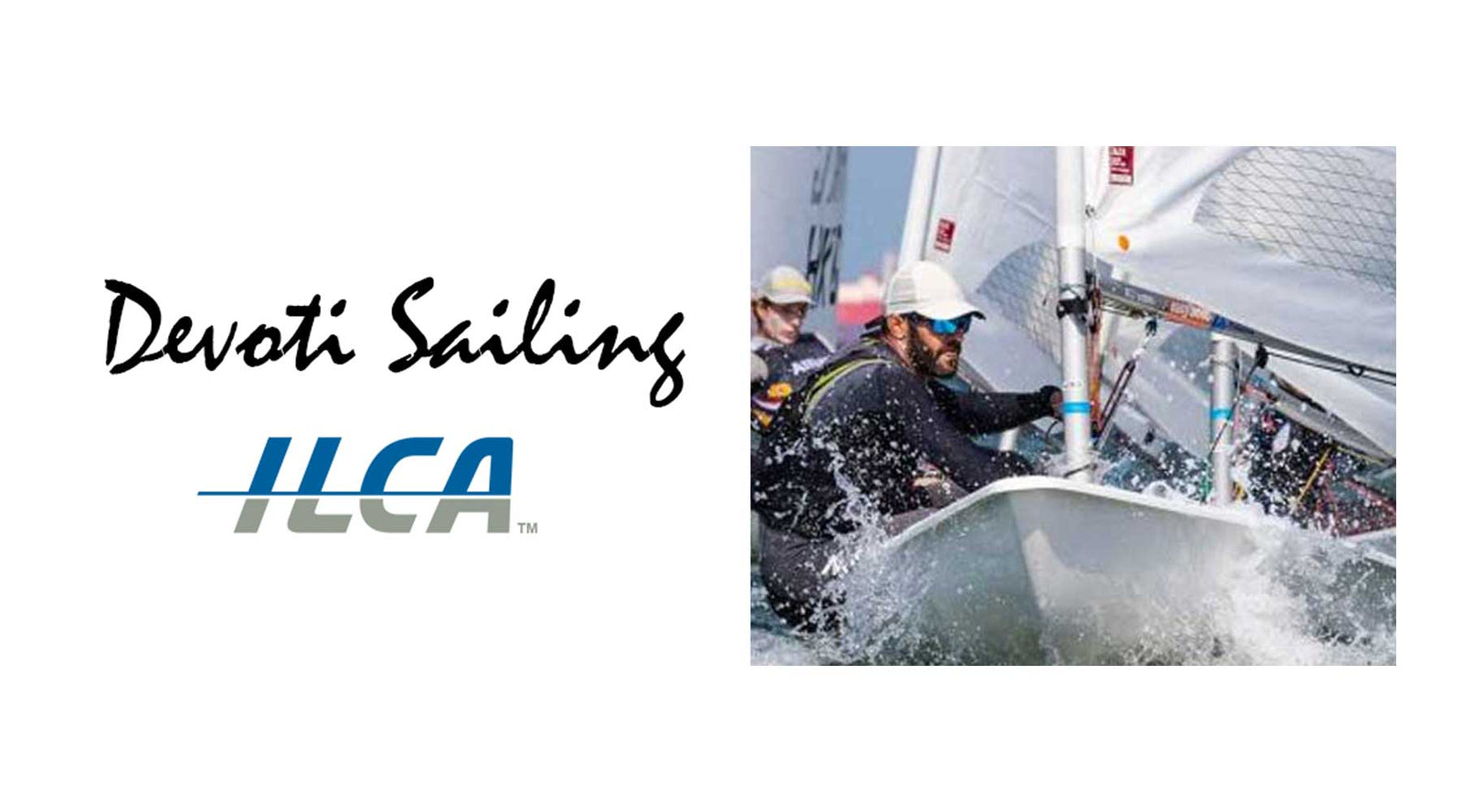 New Devoti ILCA Search our chandlery Laser Sails from Laser PerformanceMarch 08, 2018 2 min read Official Laser Sails at Sailing ChandleryAs an official Laser Performance Authorised dealer, Sailing Chandlery have a range of Laser sails in stock and ready to supply for a variety of sailing activities. We appreciate that not everyone wants to be an Olympic Champion and the level of sailing will range massively across our customers. We're as much about supporting the weekend warrior as we are the professional sailor and are happy to provide advice on which Laser sail is best for you. It's important to note, it's not only Laser sails we can supply, we also supply for the Laser Pico , Laser Bug , Laser Bahia , Dart 16 and many other boats in the Laser Performance range. For the Laser 1 Laser Performance offer 3 types of sail for the Laser standard, Laser radial and Laser 4.7 boats.
Laser Standard SailsAlso known as the full rig the Laser standard sail is available in a MKI or MKII shape. The MKII is fast becoming the sail of choice.
Laser Radial Sails
Laser 4.7 Sails
You can see the full range of Laser sails on our website. If you have any questions about the sails available or which is going to be the best for you then please do feel free to call us on 07793 953564. Recent Articles
Let customers speak for usSuperb service. Keep up the good work. Does what it should do Nice to wear keeping me nice and warm Easy to find and order what I needed. Quick delivery. Good price. Very comfortable but do measure your foot as suggested and they fit perfectly......don't go by your shoe size! Sailing Chandlery provide a quick service, at a good price, supplying a wide range of products, allowing me to replace my dinghy halyard which had recently snapped. I will return to Sailing Chandlery for future boat repairs. very impressed with the polycotton cover I ordered for my Laser Vago. It is well-made and in the UK too which takes a big box for me and was delivered well within the timescales that I anticipated so all round five big stars from me One minor gripe Is that I wish there were two loops to lift the cover at the back to prevent water pooling rather than just the one. But that’s me being really picky I bought this to repair a campervan canvas pop top and it worked a treat because it is strong and weather proof. I've used on other outdoor fabrics since so came back for a second roll. I came back to Sailing Chandlery as they were quick and efficient and had just what I wanted. Highly recommend. Boat cover is excellent quality and arrived quite quickly. I would definitely use Sailing Chandlery again. Thank you. The cover looks good, and feels good quality. It fits great and has the peace of mind of the 5 year guarantee. My hatch is 25 years old but works fine apart from the seal shrank and kept dropping out of the slot. Fitting this new seal makes the hatch tighten nice and snug and the seal stays in place. Also saved me changing the whole hatch with the work that involves. The numbers were just what I wanted; numbers which stuck to my sail. Don’t be surprised I left this review as I have purchased numbers from other places which didn’t stick well and came off on the first outing, but these ones have held fast. The only tool for the job Great product & easy to fit Great product SIGN UP TO OUR NEWSLETTERSave up to 40% on your next order.  The best things in life have only one thing in common: They are unique… Laserperformance OUR COMMITMENT75% SHARE OF RENEWABLE ENERGYEu target: 32% reduction. CARBON NEUTRALITY WITH ZERO NET GREENHOUSE GAS EMISSIONSEu target: 40% reduction, sailing news, sunfish quality report 2023, mediterranean games, sunfish worlds.
Privacy Overview
Great choice! Your favorites are temporarily saved for this session. Sign in to save them permanently, access them on any device, and receive relevant alerts.
Laser RadialLaser Radial is a 13 ′ 8 ″ / 4.2 m monohull sailboat designed by Bruce Kirby and built by Laserperformance.com starting in 1982. Rig and SailsAuxilary power, accomodations, calculations. The theoretical maximum speed that a displacement hull can move efficiently through the water is determined by it's waterline length and displacement. It may be unable to reach this speed if the boat is underpowered or heavily loaded, though it may exceed this speed given enough power. Read more. Classic hull speed formula: Hull Speed = 1.34 x √LWL Max Speed/Length ratio = 8.26 ÷ Displacement/Length ratio .311 Hull Speed = Max Speed/Length ratio x √LWL Sail Area / Displacement RatioA measure of the power of the sails relative to the weight of the boat. The higher the number, the higher the performance, but the harder the boat will be to handle. This ratio is a "non-dimensional" value that facilitates comparisons between boats of different types and sizes. Read more. SA/D = SA ÷ (D ÷ 64) 2/3
Ballast / Displacement RatioA measure of the stability of a boat's hull that suggests how well a monohull will stand up to its sails. The ballast displacement ratio indicates how much of the weight of a boat is placed for maximum stability against capsizing and is an indicator of stiffness and resistance to capsize. Ballast / Displacement * 100 Displacement / Length RatioA measure of the weight of the boat relative to it's length at the waterline. The higher a boat’s D/L ratio, the more easily it will carry a load and the more comfortable its motion will be. The lower a boat's ratio is, the less power it takes to drive the boat to its nominal hull speed or beyond. Read more. D/L = (D ÷ 2240) ÷ (0.01 x LWL)³
Comfort RatioThis ratio assess how quickly and abruptly a boat’s hull reacts to waves in a significant seaway, these being the elements of a boat’s motion most likely to cause seasickness. Read more. Comfort ratio = D ÷ (.65 x (.7 LWL + .3 LOA) x Beam 1.33 )
Capsize Screening FormulaThis formula attempts to indicate whether a given boat might be too wide and light to readily right itself after being overturned in extreme conditions. Read more. CSV = Beam ÷ ³√(D / 64) Same hull as the LASER but with a smaller sail for lighter sailors. (less than 150 lbs.) Selected for use in Olympic women’s single-handed sailing event beginning in 2004. Embed this page on your own website by copying and pasting this code.  Discover Related Sailboats Laser (International)
©2024 Sea Time Tech, LLC This site is protected by reCAPTCHA and the Google Privacy Policy and Terms of Service apply.  Laser 4.7 is a Good Transition Boat from the Optimist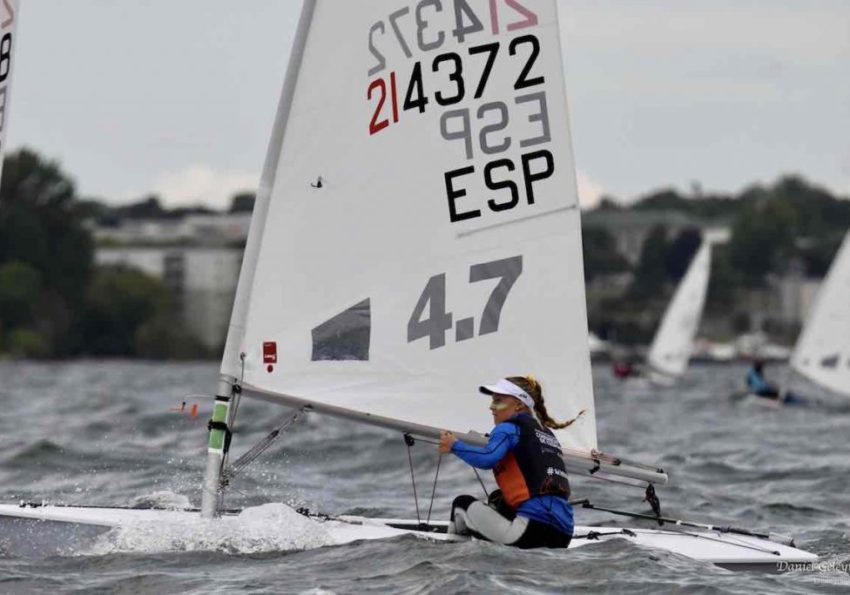 What is the Laser 4.7 rig? (aka ILCA 4)? It is a Laser sailboat (aka ILCA dinghy) with the smallest of the three sail rigs. The Laser 4.7 uses a smaller sail with a different lower mast section. A Laser Standard (aka ILCA 7) or Radial (aka ILCA 6) rig can be reconfigured into a Laser 4.7 by changing the sail and the lower mast section for under $300, using non-ILCA-class 4.7 practice sail and replica lower mast section, which are accepted for use at JSA of LIS sanctioned regattas. To encourage wider use of the 4.7 rig by smaller sailors of any age, the JSA of LIS has modified its rules to permit 4.7 rig sailors who have a lower age (12 years) and lower bodyweight (95 lbs.) . Also, eligible sailors will be able to compete in a Laser 4.7 class at the JSA Laser Championships in August 2021. Reasons to consider the Laser 4.7 as a transition boat from the Optimist:
Who should consider the Laser 4.7? Do you want to continue to sail a single-handed boat after the Optimist? Are you too heavy for the Opti and not competitive? Are you bored with the Opti and want to try something new? Are you campaigning a double-handed boat but want the added practice of racing in a bigger single-handed fleet? Do you want a good boat for Adventure Sailing?  A few points to consider about the Laser 4.7: It has achieved considerable international success. The European Laser 4.7 Championship usually attracts 400 participants. This is higher than any other youth sailing class, including the Optimist, and the 420. Interest has been growing in North America, especially in Florida and Canada. The 2019 Laser 4.7 Youth World Championships , from which these pictures were taken, had 180 boats sailing in Kingston, ON, Canada. Related posts:
JUNIOR SAILING ASSOCIATION OF LONG ISLAND SOUND, INC.Founded in 1924, the JSA is an independent, non-profit corporation that is tax-exempt under Section 501 (c) (3) of the US Internal Revenue Code, and also in the State of New York. QUICK LINKS
Entertainment
New on Yahoo
At this Nashville sail camp, kids learn the ropes of teamwork, friendship and funThe shifting wind nearly made Rex Jackson capsize. He acted quickly to reposition the swaying boom on his sailboat and shift his weight around to stay upright. "I'm just having a little technical difficulty!" the 8-year-old said with a confident smile to Tracie Hosse, who was keeping a watchful eye in a nearby boat. After an hour or two on the water, Rex seemed entirely unfazed by the episode as he shed his life jacket and grabbed some lunch. Hosse, who oversees the camp, said the boy took quickly to sailing in just a few days, alongside 27 other children attending Summer Sail Camp at Harbor Island Yacht Club on a warm, sunny mid-June morning. The camp runs weekly throughout June each year for kids ages 7-17, with small dinghies, known as Opti boats, for beginners, along with larger Laser and RS sailboats for more experienced campers. Volunteers, coaches and instructors also fan out on the water in kayaks and motorboats to help the kids along, challenge them to games and teach them how to navigate. The club is situated just north of Nashville on Old Hickory Lake, which feeds into the Cumberland River. Hosse said they stick with three guiding principles for camp: safety, fun and skills. The team makes sure the kids take away more than sailing knowledge and skills from each camp. They instill the values of respect, camaraderie, leadership, gratitude and care into them, among others. "Communication is huge," Hosse said as she manned the outboard motor on one of several "coach boats" in the water. "If something breaks, it's OK. You get to tell somebody. Somebody can fix it, we can replace it, we can repair it." Last year, she even took a few sails that tore when boats got tangled up on a dock and turned them into bags for the students. Instructor Emery Sensing, who turns 16 this month, was a camper for four years before she joined the staff. The kids can volunteer for the camp at 14, get a paid position at 15 and become a paid instructor the year they turn 16 after undergoing rigorous training and passing a test. She said the camp gave her confidence to problem solve on her own. "I was taught to think on my own and think on my feet quickly," she said. One of her favorite parts of camp is when the counselors get to race while the kids watch. Another highlight is getting to see the kids apply the things she and others are teaching them and have fun on the water. Case in point: She proudly talked about 11-year-old Sam Pollard quickly recovering after his Opti boat "turtled" that morning, meaning it went upside down. For a minute, Sam said he worried something broke. "It was only a capsize," Sam said as he excitedly recapped the experience. Hosse said watching the kids enjoy the simpler things at camp is also a joy to her and others. She pointed to kids trailing their hands in the water as their partner steered the boat, or others giggling as they practiced "hiking," or leaning their body in the direction of the wind to keep the boat from leaning too far one direction. She also loves seeing the kids become friends and learn to work together. "It restores my faith in humanity," she said. Reach children's reporter Rachel Wegner at [email protected] or follow her on Twitter, Threads and Bluesky @RachelAnnWegner. This article originally appeared on Nashville Tennessean: Nashville sail camp: Kids learn the ropes on teamwork, friendship, fun Recommended StoriesHere are all of the just-announced copilot+ pcs with snapdragon x chips. Microsoft has partnered with a bunch of PC manufacturers to unveil laptops with the company’s Copilot AI built into the system. Here are all of the major announcements and products. 2024 Nissan Z Review: Classic looks, classic fun, iffy valueNissan Z Nismo joins the lineup for 2024 along with the new Z Heritage Edition that's a nod to the old Datsun 240Z. The Morning After: US Surgeon General says social media needs warning labels like cigarettesThe biggest news stories this morning: McDonald’s pauses AI-powered drive-thru voice orders, Neopets is back, The US has sued Adobe over its awful subscription rules. Mortgage rates today, June 18, 2024: Rates go upThese are today's mortgage rates. Rates have risen across the board, though the increases aren't drastic. Lock in your rate today. Investors can't afford to miss the AI rally: Morning BriefThe AI trade has powered stocks to record highs and this theme will only grow more important. Meaning no investor can afford not to have an answer when someone asks how they're playing AI. Logitech Keys-To-Go 2 review: A super slim travel companion for almost any gadgetFor just $80, Logitech’s Keys-To-Go 2 is a super slim and surprisingly versatile universal travel keyboard. Dodgers expect All-Star Mookie Betts to miss 6-8 weeks with fractured handBetts was hit in his hand with a 98 mph fastball on Sunday. College sports turning into NASCAR & championship winning rostersOn today's episode, Dan Wetzel, Ross Dellenger and SI's Pat Forde react to news of the Big 12 exploring selling their naming rights to a corporate sponsor, discuss a formula for championship winning teams, check in on the College World Series jello shot competition, and hear about producer Joe's insane fantasy football punishment. 'Hard Knocks' will follow all 4 AFC North teams for its 2024 in-season editionFor the first time, HBO's "Hard Knocks" NFL docuseries will follow four teams during its in-season edition. Sex isn't taboo on 'Bridgerton.' Neither is queer romance."It is really affirming and wonderful to see one of the most prominent and mainstream shows in popular culture ... commit to platforming queer characters and queer love,” one fan told Yahoo. Men's College World Series Day 4: Florida eliminates NC State, Big inning puts Texas A&M in semifinalsDay 4 of the 2024 Men's College World Series saw Florida eliminate NC State and Texas A&M move on to the semifinals. Stock market today: Stocks zoom higher as S&P 500 notches 30th record close of 2024Wall Street wondered if the bull rally that has roared through 2024 has more room to run. Apple Pay Later is dead, long live Affirm loansApple Pay Later is kaput. The company confirmed to TechCrunch on Monday that it’s killing the service only two years after first announcing it at WWDC 2022. Reese Witherspoon, 48, uses this glowy vitamin C oil — and it's nearly 50% offThe Biossance serum helps brighten skin, lock in moisture and improve firmness: 'Every woman over 50 should have this product on hand.' Stanley's summer sale is finally here! Get 25% off these 8 shopper favoritesSnap up everything from travel bottles to insulated mugs for as low as $15. Walmart+ Week: Members save 20 cents off every gallon of gas — that's 2x the usual savingsIf I fill up my tank even once a week, on average, I can save $100 a year on fuel. And the Walmart+ Week gas deals make traveling by car even cheaper! The NASCAR-ification of college sports is on the way, whether fans like it or notCollege athletics has always been about the money. But with corporate logos on fields and jerseys, it's about to get a whole lot more obvious. 25 wedding anniversary gifts for your wife that we love — and she will, tooMark another year of marital bliss with these sweet and sentimental presents. Some parents are determined to keep their kids away from social media and smartphones. Here's what it's like.From banding together with other parents to create tech-free "nests" to setting strict rules around screens, some families are cracking down on social media. Bali's 'comfortable at last' cooling bra is just $20 — nearly 60% off'No pinching, chafing, or poking': Welcome rising temps in this moisture-wicking wonder with almost 24,000 five-star fans. motorboats for sale scotland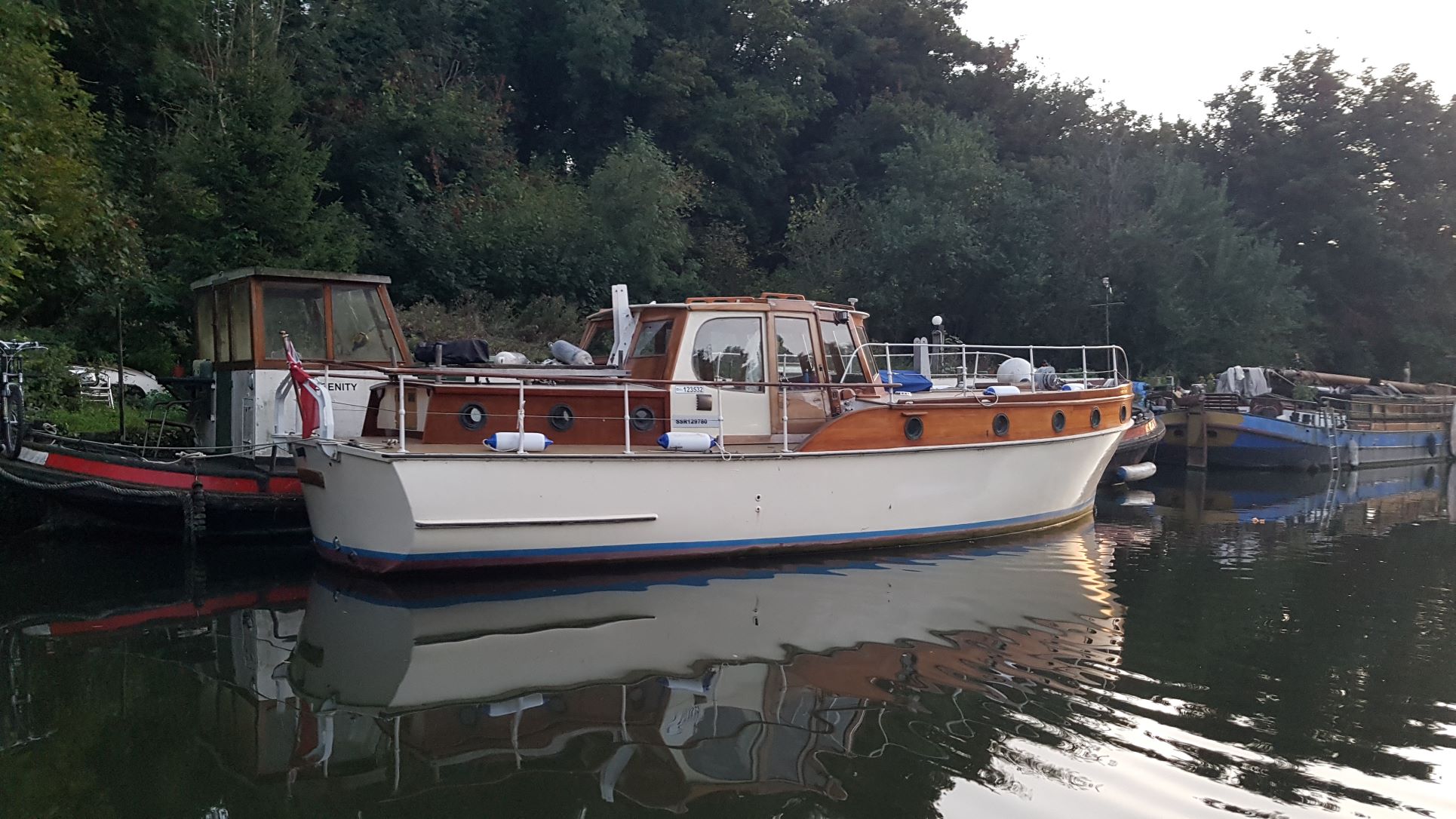 The Unique Burial of a Child of Early Scythian Time at the Cemetery of Saryg-Bulun (Tuva)<< Previous page Pages: 379-406 In 1988, the Tuvan Archaeological Expedition (led by M. E. Kilunovskaya and V. A. Semenov) discovered a unique burial of the early Iron Age at Saryg-Bulun in Central Tuva. There are two burial mounds of the Aldy-Bel culture dated by 7th century BC. Within the barrows, which adjoined one another, forming a figure-of-eight, there were discovered 7 burials, from which a representative collection of artifacts was recovered. Burial 5 was the most unique, it was found in a coffin made of a larch trunk, with a tightly closed lid. Due to the preservative properties of larch and lack of air access, the coffin contained a well-preserved mummy of a child with an accompanying set of grave goods. The interred individual retained the skin on his face and had a leather headdress painted with red pigment and a coat, sewn from jerboa fur. The coat was belted with a leather belt with bronze ornaments and buckles. Besides that, a leather quiver with arrows with the shafts decorated with painted ornaments, fully preserved battle pick and a bow were buried in the coffin. Unexpectedly, the full-genomic analysis, showed that the individual was female. This fact opens a new aspect in the study of the social history of the Scythian society and perhaps brings us back to the myth of the Amazons, discussed by Herodotus. Of course, this discovery is unique in its preservation for the Scythian culture of Tuva and requires careful study and conservation. Keywords: Tuva, Early Iron Age, early Scythian period, Aldy-Bel culture, barrow, burial in the coffin, mummy, full genome sequencing, aDNA Information about authors: Marina Kilunovskaya (Saint Petersburg, Russian Federation). Candidate of Historical Sciences. Institute for the History of Material Culture of the Russian Academy of Sciences. Dvortsovaya Emb., 18, Saint Petersburg, 191186, Russian Federation E-mail: [email protected] Vladimir Semenov (Saint Petersburg, Russian Federation). Candidate of Historical Sciences. Institute for the History of Material Culture of the Russian Academy of Sciences. Dvortsovaya Emb., 18, Saint Petersburg, 191186, Russian Federation E-mail: [email protected] Varvara Busova (Moscow, Russian Federation). (Saint Petersburg, Russian Federation). Institute for the History of Material Culture of the Russian Academy of Sciences. Dvortsovaya Emb., 18, Saint Petersburg, 191186, Russian Federation E-mail: [email protected] Kharis Mustafin (Moscow, Russian Federation). Candidate of Technical Sciences. Moscow Institute of Physics and Technology. Institutsky Lane, 9, Dolgoprudny, 141701, Moscow Oblast, Russian Federation E-mail: [email protected] Irina Alborova (Moscow, Russian Federation). Candidate of Biological Sciences. Moscow Institute of Physics and Technology. Institutsky Lane, 9, Dolgoprudny, 141701, Moscow Oblast, Russian Federation E-mail: [email protected] Alina Matzvai (Moscow, Russian Federation). Moscow Institute of Physics and Technology. Institutsky Lane, 9, Dolgoprudny, 141701, Moscow Oblast, Russian Federation E-mail: [email protected] Shopping Cart Items: 0 Cart Total: 0,00 € place your order Price pdf version student - 2,75 € individual - 3,00 € institutional - 7,00 €  Copyright В© 1999-2022. Stratum Publishing House

Rusmania • Deep into Russia Out of the CentreSavvino-storozhevsky monastery and museum.  Zvenigorod's most famous sight is the Savvino-Storozhevsky Monastery, which was founded in 1398 by the monk Savva from the Troitse-Sergieva Lavra, at the invitation and with the support of Prince Yury Dmitrievich of Zvenigorod. Savva was later canonised as St Sabbas (Savva) of Storozhev. The monastery late flourished under the reign of Tsar Alexis, who chose the monastery as his family church and often went on pilgrimage there and made lots of donations to it. Most of the monastery’s buildings date from this time. The monastery is heavily fortified with thick walls and six towers, the most impressive of which is the Krasny Tower which also serves as the eastern entrance. The monastery was closed in 1918 and only reopened in 1995. In 1998 Patriarch Alexius II took part in a service to return the relics of St Sabbas to the monastery. Today the monastery has the status of a stauropegic monastery, which is second in status to a lavra. In addition to being a working monastery, it also holds the Zvenigorod Historical, Architectural and Art Museum. Belfry and Neighbouring Churches Located near the main entrance is the monastery's belfry which is perhaps the calling card of the monastery due to its uniqueness. It was built in the 1650s and the St Sergius of Radonezh’s Church was opened on the middle tier in the mid-17th century, although it was originally dedicated to the Trinity. The belfry's 35-tonne Great Bladgovestny Bell fell in 1941 and was only restored and returned in 2003. Attached to the belfry is a large refectory and the Transfiguration Church, both of which were built on the orders of Tsar Alexis in the 1650s.  To the left of the belfry is another, smaller, refectory which is attached to the Trinity Gate-Church, which was also constructed in the 1650s on the orders of Tsar Alexis who made it his own family church. The church is elaborately decorated with colourful trims and underneath the archway is a beautiful 19th century fresco. Nativity of Virgin Mary Cathedral The Nativity of Virgin Mary Cathedral is the oldest building in the monastery and among the oldest buildings in the Moscow Region. It was built between 1404 and 1405 during the lifetime of St Sabbas and using the funds of Prince Yury of Zvenigorod. The white-stone cathedral is a standard four-pillar design with a single golden dome. After the death of St Sabbas he was interred in the cathedral and a new altar dedicated to him was added.  Under the reign of Tsar Alexis the cathedral was decorated with frescoes by Stepan Ryazanets, some of which remain today. Tsar Alexis also presented the cathedral with a five-tier iconostasis, the top row of icons have been preserved. Tsaritsa's Chambers The Nativity of Virgin Mary Cathedral is located between the Tsaritsa's Chambers of the left and the Palace of Tsar Alexis on the right. The Tsaritsa's Chambers were built in the mid-17th century for the wife of Tsar Alexey - Tsaritsa Maria Ilinichna Miloskavskaya. The design of the building is influenced by the ancient Russian architectural style. Is prettier than the Tsar's chambers opposite, being red in colour with elaborately decorated window frames and entrance.  At present the Tsaritsa's Chambers houses the Zvenigorod Historical, Architectural and Art Museum. Among its displays is an accurate recreation of the interior of a noble lady's chambers including furniture, decorations and a decorated tiled oven, and an exhibition on the history of Zvenigorod and the monastery. Palace of Tsar Alexis The Palace of Tsar Alexis was built in the 1650s and is now one of the best surviving examples of non-religious architecture of that era. It was built especially for Tsar Alexis who often visited the monastery on religious pilgrimages. Its most striking feature is its pretty row of nine chimney spouts which resemble towers. 
Plan your next trip to RussiaReady-to-book tours. Your holiday in Russia starts here. Choose and book your tour to Russia. REQUEST A CUSTOMISED TRIPLooking for something unique? Create the trip of your dreams with the help of our experts.  |
COMMENTS
Laser Radial / ILCA 6. Originally called the 'M' rig when first designed, the Laser 'Radial' sail is smaller than the 'Standard' sail at 5.76 square meters (62 square feet). At the time, it was the only Laser sail to feature the radial cut panels, which allowed the sail to be de-powered more easily in bigh winds.
Laser Radial Rig: The Laser Radial is the next step up. It uses a more flexible and slightly shorter lower mast section that the Laser Standard rig, along with an 18% smaller sail area. The Radial has a large following that continues to grow with national and international regattas and World, Open, & Youth Championships.
Thanks to the three rig sizes in the Laser class, the weight range in the Laser is quite large. Generally, the Laser Radial (ILCA 6) is suitable for sailors between 60kg and 75kg while the Laser Standard (ILCA 7) is suitable for sailors 75kg to over 90kg. The Laser 4.7 (ILCA 4) is designed specifically for younger and lighter sailors with an ...
Laser Radial / ILCA 6. Originally called the 'M' rig when first designed, the Laser 'Radial' sail is smaller than the 'Standard' sail at 5.76 square meters (62 square feet). At the time, it was the only Laser sail to feature the radial cut panels, which allowed the sail to be de-powered more easily in bigh winds.
Above from left to right: Laser lower mast, Radial lower mast, and Laser 4.7 lower mast. From left to right: Laser sail, Radial sail, Laser 4.7 Sail. New Race and XD models come with a rolled sail Your boat rigged will resemble one of the lasers shown above. From left to right: Laser, Radial, and Laser 4.7. Congratulations on the purchase of your
Practice Sail for Laser Standard Mk2 Full Rig (ILCA 7) Price: $199.99 Sale price: $159.99: Practice Sail for Laser Radial Sailboats (ILCA 6) Price: $175.00 Sale price: $139.99: Practice Sail for Laser Sailboats 4.7 (ILCA 4) Price: $165.00 Sale price: $129.99: Intensity Batten Set for ILCA/Laser Sails Fits ILCA7 Mk1 ILCA6 & ILCA4 Price: $14.99 ...
The Radial uses the same hull and fittings as the Laser Standard, but has a smaller sail (5.8 m 2) than the Standard with a different cut, and has a shorter lower mast section. Optimal weight for this rig is 121 to 159 pounds (55 to 72 kg). The Laser Radial rig has a UK Portsmouth Yardstick number of 1150. Its DPN is 96.7. Laser 4.7
The recommended weight capacity for a Laser sailboat varies depending on the rig size. The ILCA 6 (Laser Radial) is suitable for sailors between 60 kg and 75 kg, while the ILCA 7 (Laser Standard) is better suited for sailors weighing 75 kg to over 90 kg. The ILCA 4 (Laser 4.7) is designed for younger and lighter sailors.
The Laser Radial rig was designed to make the Laser less overpowering for lighter sailors. It uses a smaller radial-cut sail and a shorter, bendier bottom spar that makes the boat easier to race for small adults, women and youth. The rest of its equipment is exactly the same as the full-rig Laser and 4.7. The Radial
Rigging the Clew Tie Down: Laser Standard. Locate the clew tie down line from the delivery kit line bag. Wrap the clew tie down line through the clew grommet and around the boom two times (Figure 33) and secure it with a square knot (Figure 34). Be sure that the line runs on the inside of the outhaul. Grommet.
Laser Radial / ILCA 6- The 'radial' sized Laser sail (62 square feet) is used with the 'radial' lower mast section, which is a few feet shorter than the 'standard' lower mast section to accommodate the smaller sail and allow the rig to depower more easily. Laser Radial Sails are also available from North Sails and Hyde Sails and are ILCA class ...
To properly rig a Laser sailboat, it is important to understand the components involved, including the rigging lines. Here are the steps to follow: 1. Begin by setting up the main halyard. Attach it to the head of the sail and run it through the top of the mast. 2.
The MKII is fast becoming the sail of choice. Class Legal Laser Radial Sail - £540; Class Compliant Laser Radial Sail - £364; Training Laser Radial Sail - £206; Laser Radial batten set - £29.81; Laser 4.7 Sails. Also known as the full rig the Laser standard sail is available in a MKI or MKII shape. The MKII is fast becoming the sail of choice.
The Laser's full size rig rewards athleticism and is best for heavier, more experienced sailors, but it can easily be converted to a Radial or 4.7 by changing just the sail and bottom spar. When you race a Laser, one hull goes a long way. Just changing the lower mast and sail, you can convert any boat from Laser to Radial to 4.7.
LaserPerformance proudly makes many sailboats including: Laser, Laser Radial, Laser 4.7, Sunfish, Laser Pico, Laser Bahia, Laser Vago, Bug, Club FJ, Club 420, 420 Omega and Z420. ... speed and stability allied with its spacious cockpit and 3 rig/ sail versions makes this the ideal platform for all levels of sailors. We believe that rotomolded ...
S.A.: Sail Area. The total combined area of the sails when sailing upwind. S.A. (reported) is the area reported by the builder. (Verses ** S.A. (100% Fore + Main Triangles) which is the area as defined by the rig measurements.) S.A. (reported) can differ depending on the size of the head sail used to calculate the S.A.
Notes. Same hull as the LASER but with a smaller sail for lighter sailors. (less than 150 lbs.) Selected for use in Olympic women's single-handed sailing event beginning in 2004. Suggest Improvements. Source: sailboatdata.com / CC BY. Embed. Laser Radial is a 13′ 8″ / 4.2 m monohull sailboat designed by Bruce Kirby and built by ...
The sail area of a Laser 4.7 is about 18% smaller than a Laser Radial rig, which makes the 4.7 rig suitable to the physique of most youth sailors. Ideal weight for the 4.7 rig is between 110 lbs.-145 lbs. but 95 lbs. is OK for most conditions on Long Island Sound. The 4.7 rig is age appropriate, with some sailors starting at 12 years old.
I'm about 150 lbs. and sail both a radial and full rig. Compared to a full rig the radial is noticeably slower, especially in light to moderate wind. This seems to be supported by the higher Portsmouth ratings for a radial rig versus a full rig at all wind strengths.
Instructor Emery Sensing, 15, coaches Rex Jackson, 8, as he rigs up a sail while volunteer Max Spires, 14, puts on his life jacket during Summer Sail Camp at the Harbor Island Yacht Club in Old ...
234. With an unobtrusively low centerboard trunk and an elegantly simple swept spreader three-stay rig, the Precision 15 is beautiful both to see and to sail. And at only 390 pounds fully rigged, she's a snap to trailer and launch. You'll enjoy many years of safe and spirited sailing in your Precision 15.
From left, Rhett Thomas, 13, Grey Kirk, 13, and George McLaughlin, 13, ride Laser sailboats during Summer Sail Camp at the Harbor Island Yacht Club in Old Hickory, Tenn., Wednesday, June 12, 2024.
Elektrostal is a city in Moscow Oblast, Russia, located 58 kilometers east of Moscow. Elektrostal has about 158,000 residents. Mapcarta, the open map.
Burial 5 was the most unique, it was found in a coffin made of a larch trunk, with a tightly closed lid. Due to the preservative properties of larch and lack of air access, the coffin contained a well-preserved mummy of a child with an accompanying set of grave goods. The interred individual retained the skin on his face and had a leather ...
Zvenigorod's most famous sight is the Savvino-Storozhevsky Monastery, which was founded in 1398 by the monk Savva from the Troitse-Sergieva Lavra, at the invitation and with the support of Prince Yury Dmitrievich of Zvenigorod. Savva was later canonised as St Sabbas (Savva) of Storozhev. The monastery late flourished under the reign of Tsar ...